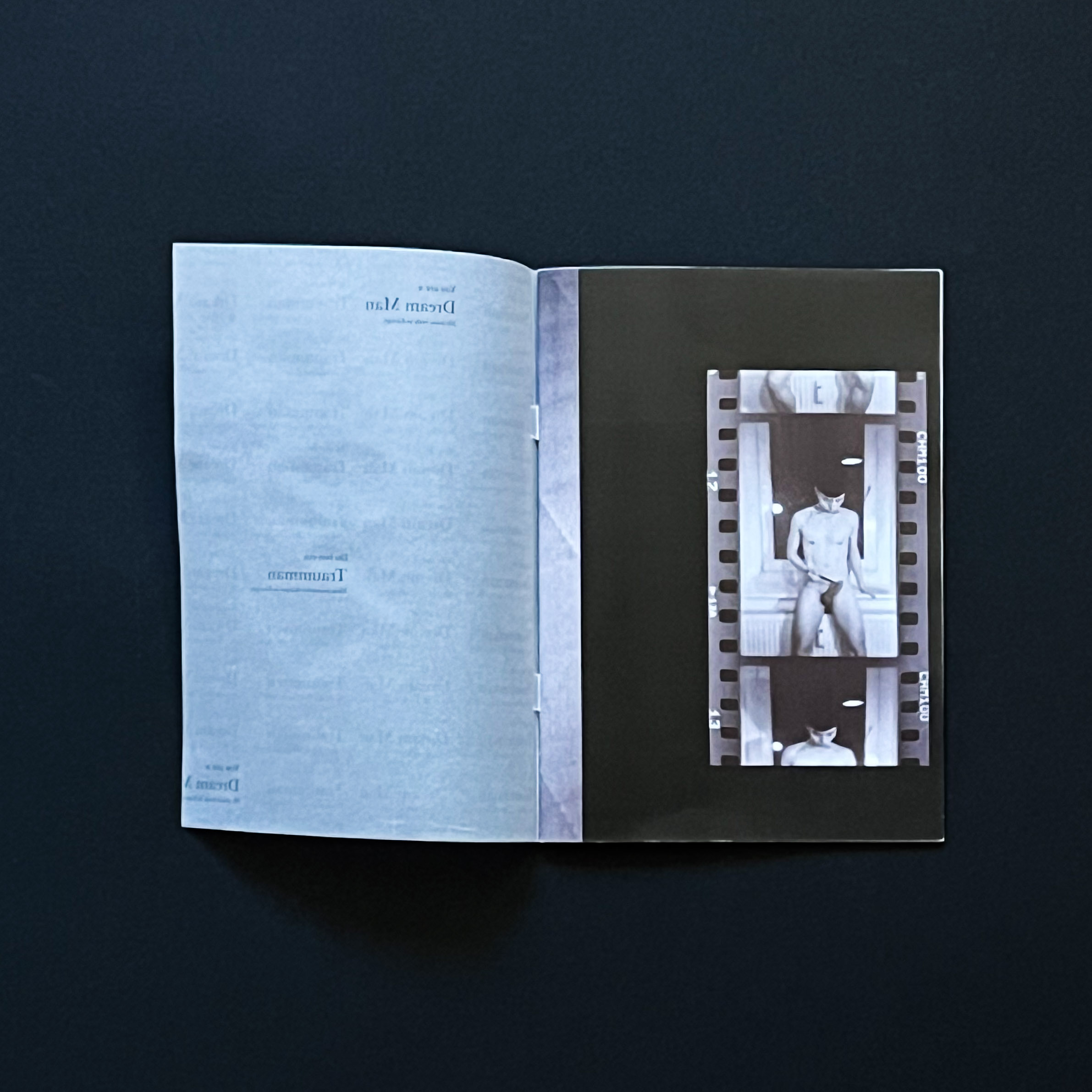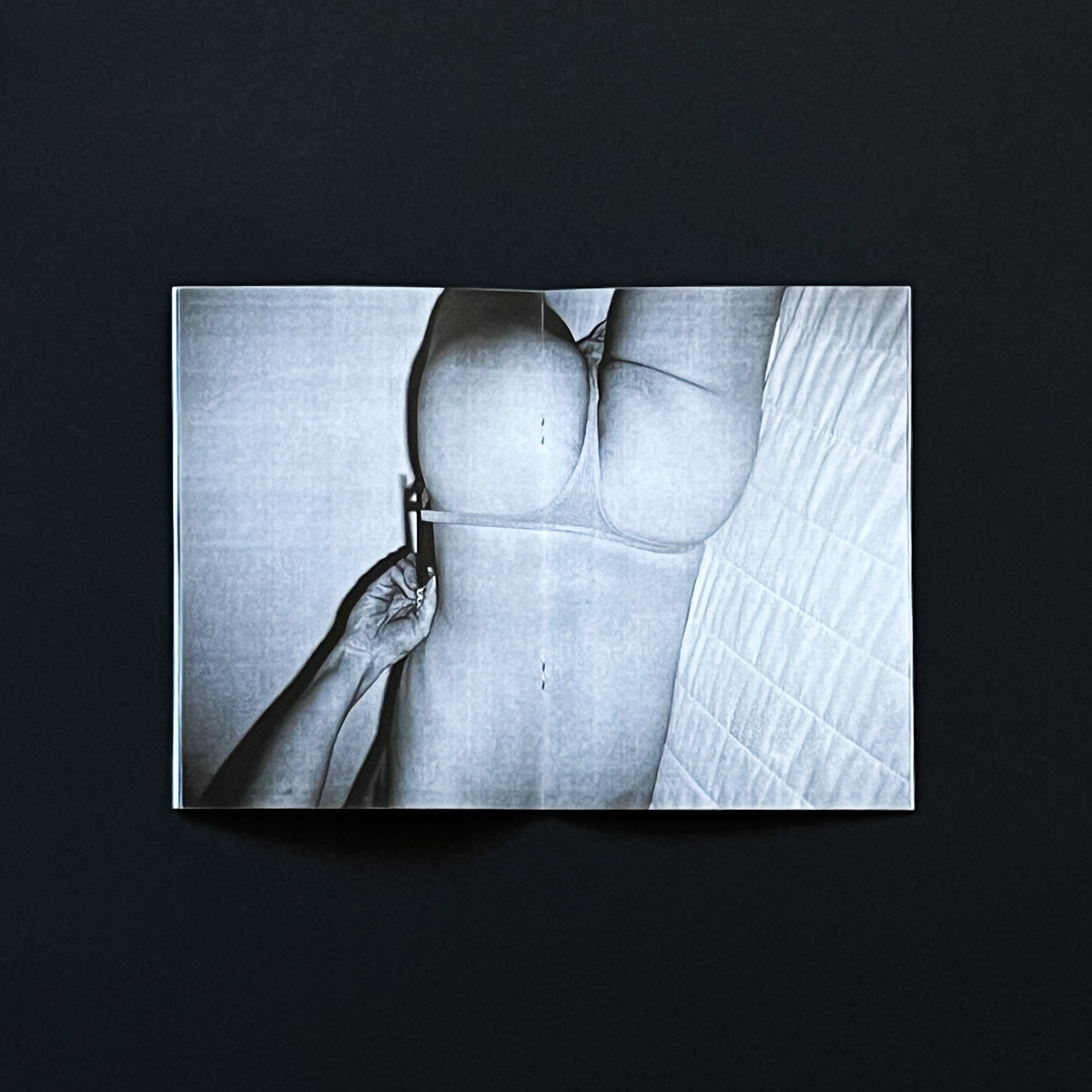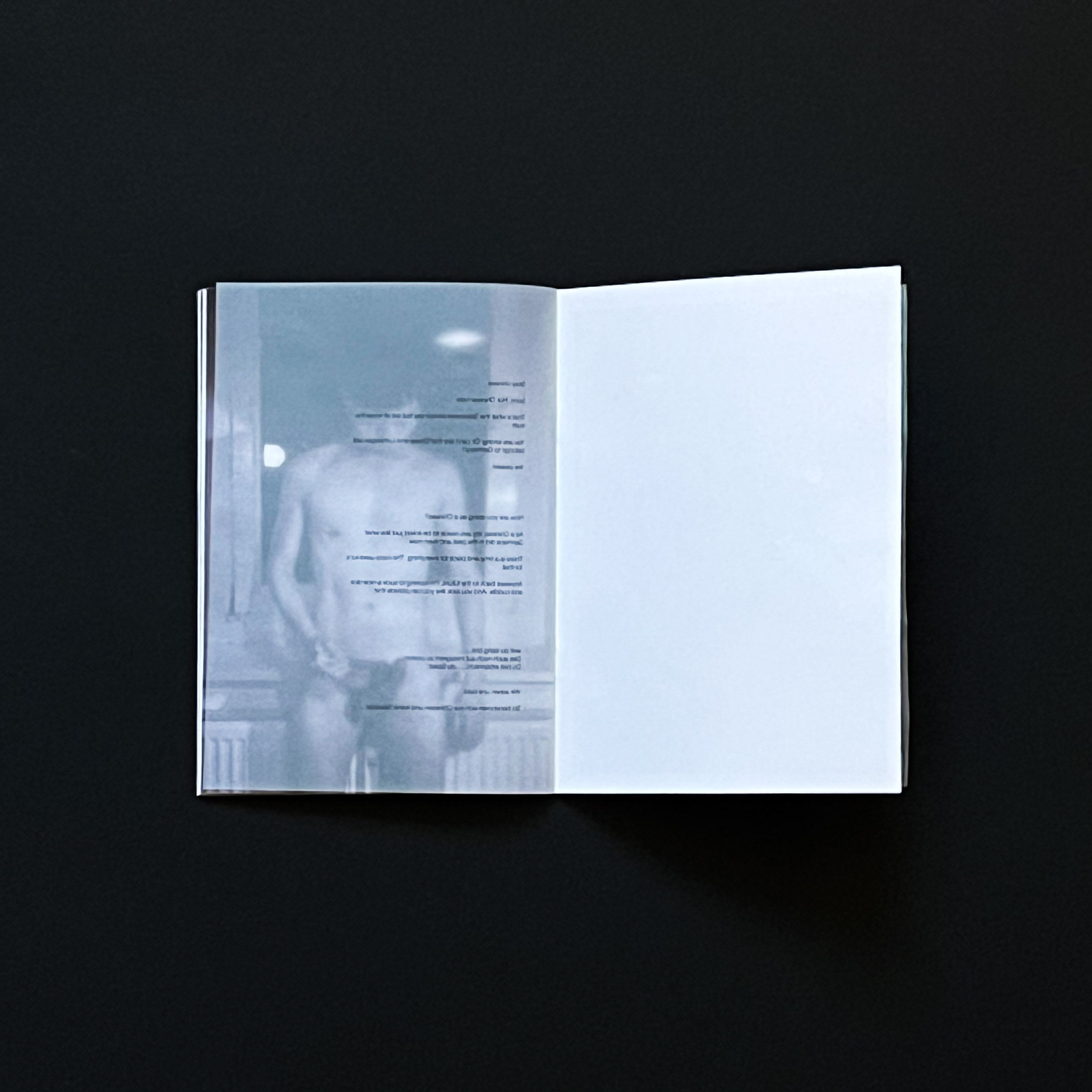Destinesia
photo print 136×200 (cm), photo print 200×200 (cm), Motion Sensor, Vibration Motors

Destinesia: An instance of forgetting the purpose of a journey upon reaching the destination.
This work Destinesia explores the fragmented experience of a non-white body navigating through spaces dominated by white gazes. It reflects on the feeling of being dissected, objectified, and simplified, which is reduced to fragments rather than recognized as a full subject. Through fragmented images, delayed reaction, and spatial dislocation, the work tries to resist direct narrative, instead creating a space where reactions arise before understanding. Audience participation becomes part of the work, as perception, interpretation, and attention complete the experience, making the replication of a living experience into the exhibition space. By separating movement from response, the work creates a gap—both sensory and conceptual—that provokes thought and discomfort. This work tries to capture a state of hyper-vigilance, of being seen yet remaining unseen, where the destination becomes secondary to the process of navigating perception itself. It is a persistent act of resistance, unfolding through presence, absence, and delay.
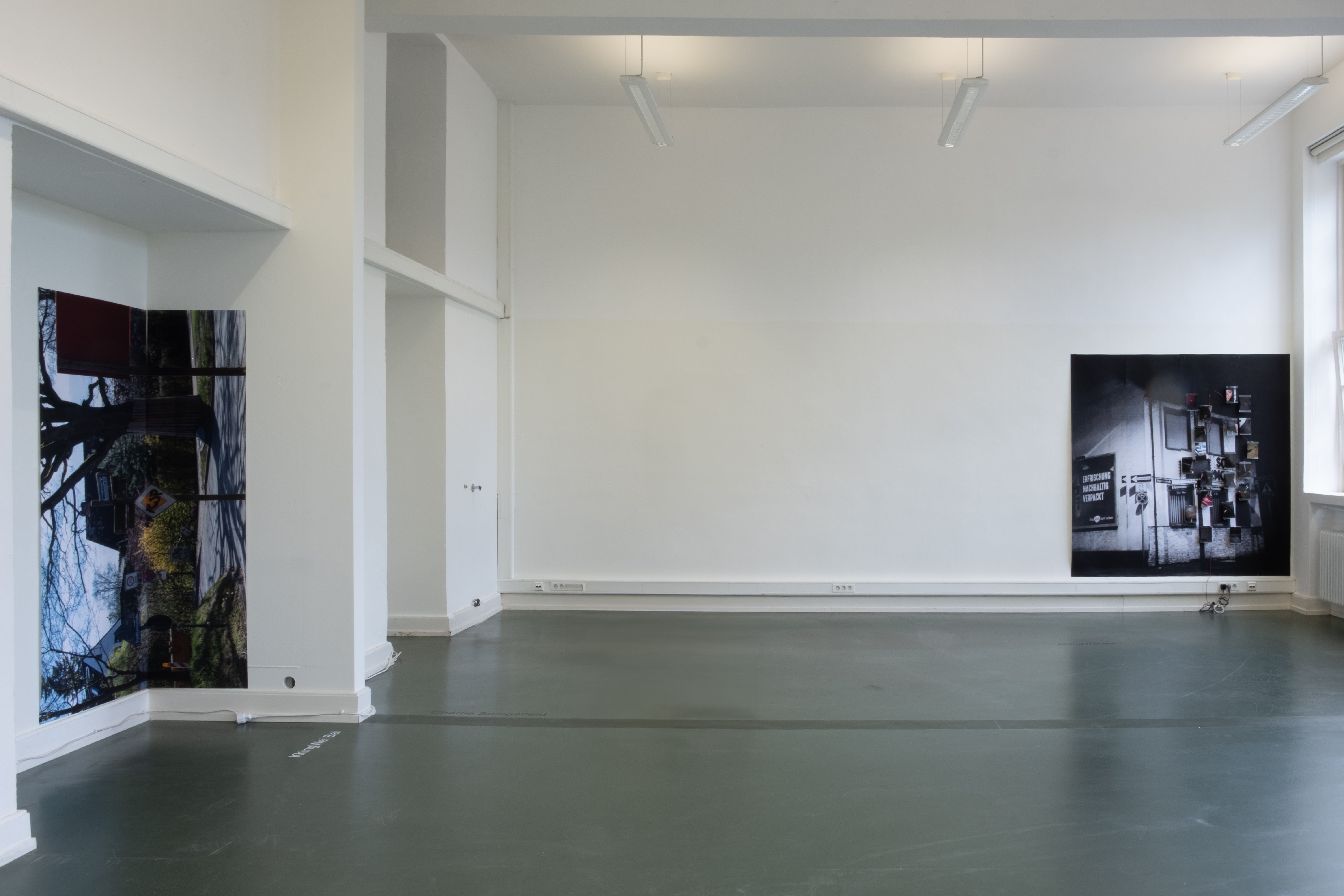
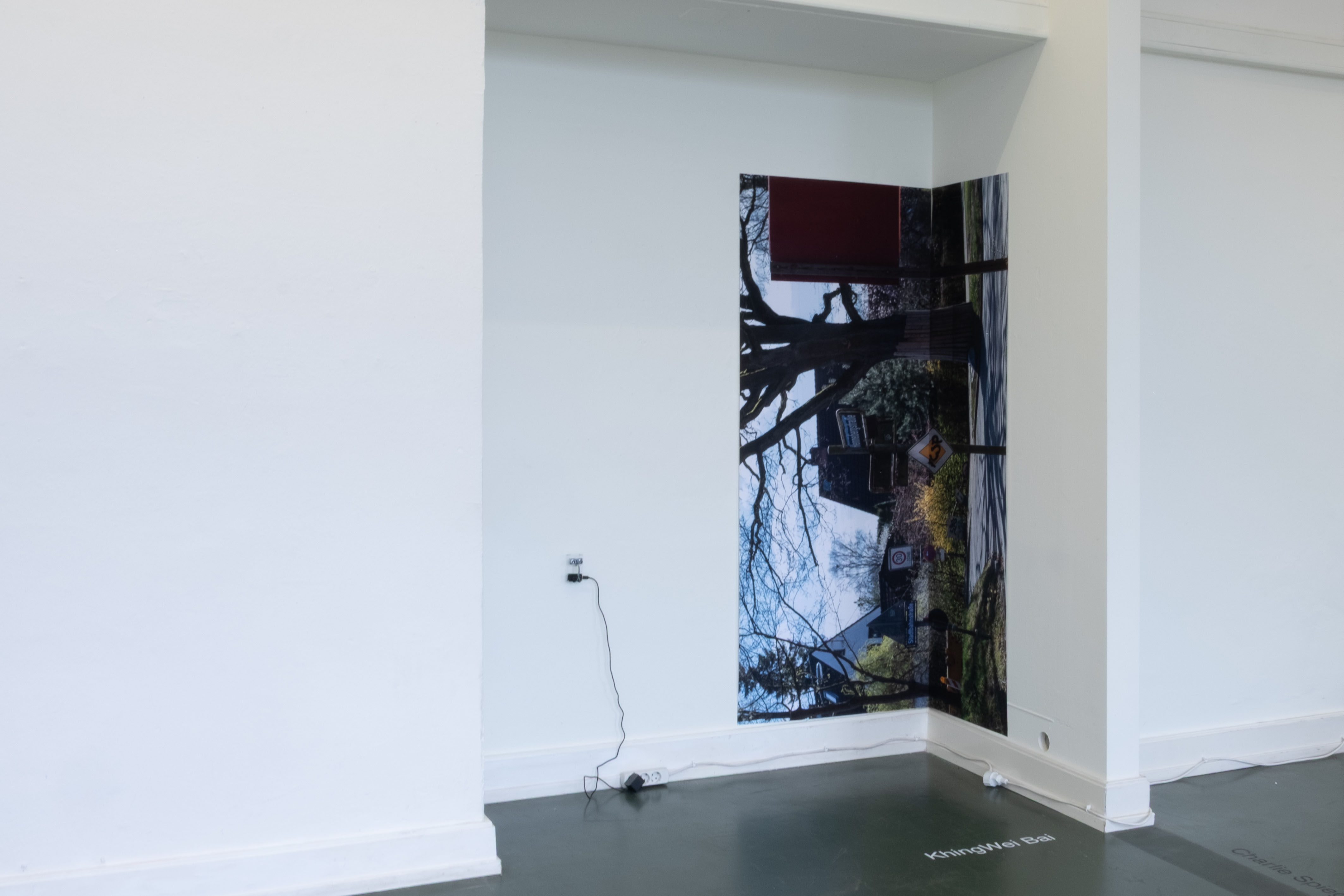
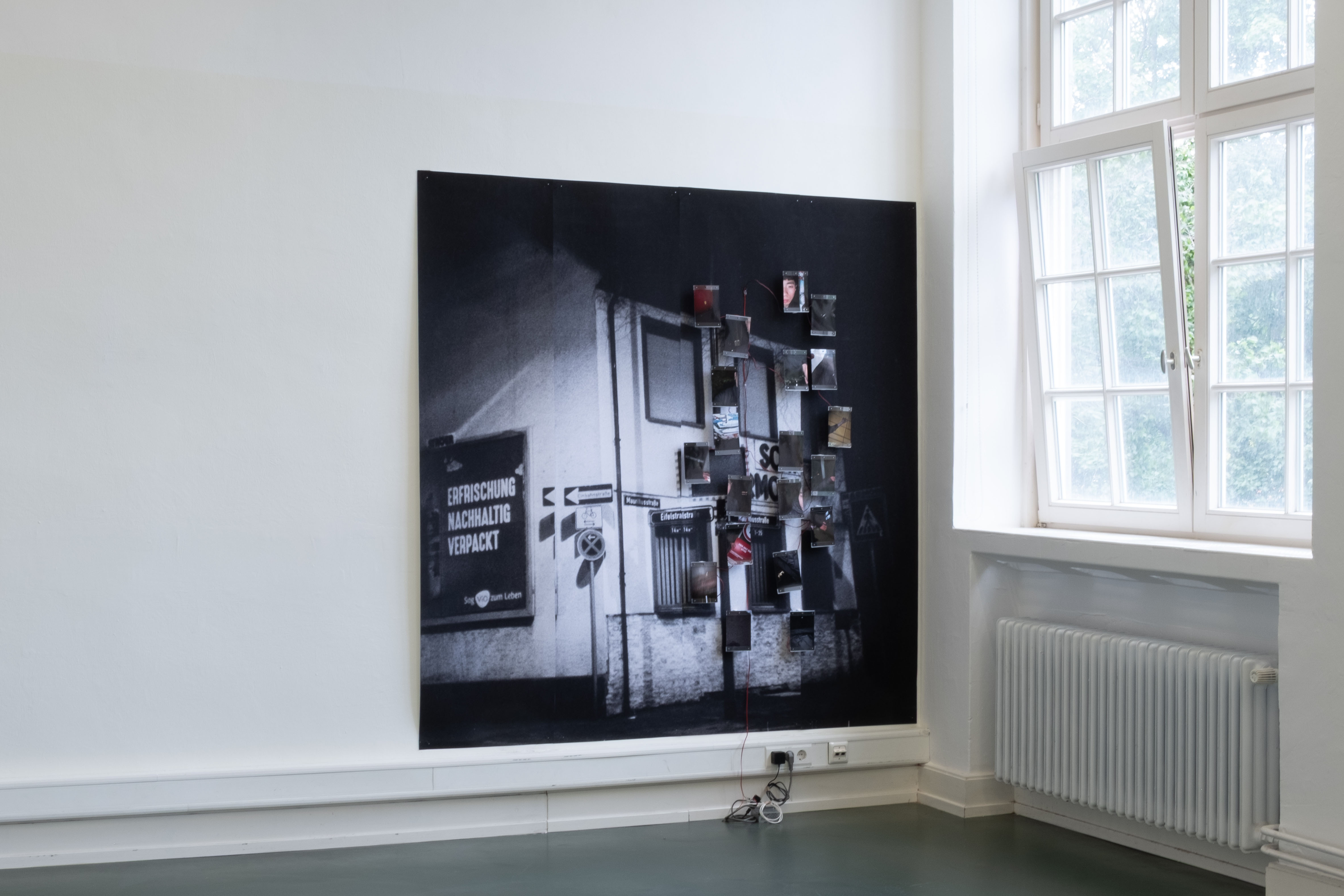
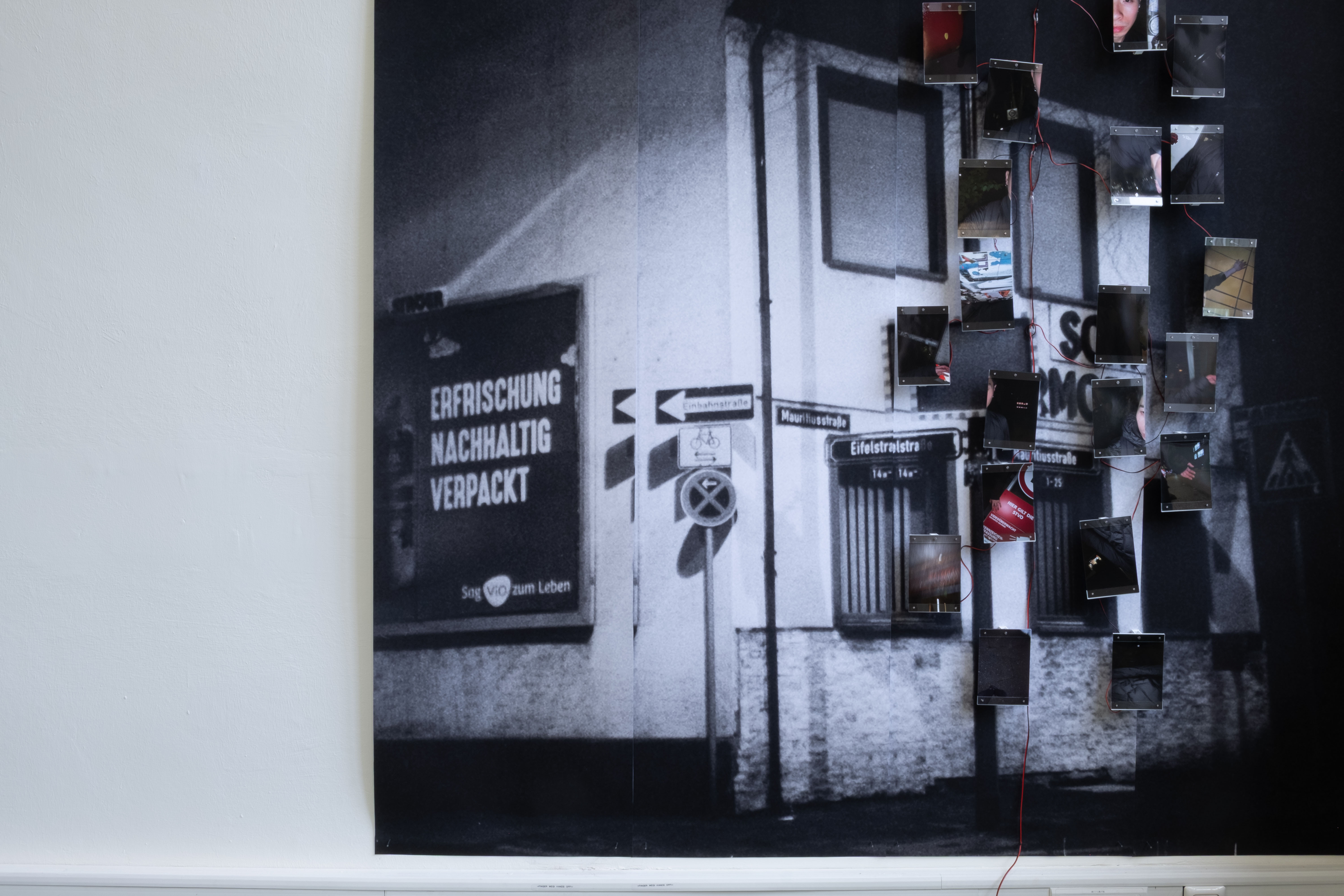
If in a desired land, a stranger
Acrylic Plates, Mechanic Structure, Depth Camera
/
If in a desired land, a stranger
/
Your beautiful body is everywhere, flying through the sky of mythology, crossing breathtaking scenes of movies. Every art piece is a glorification of that. Your body is represented in a million times, in a million shapes. You are, therefore you are.
/
My name is taken, and my body is absent. Thinner than the air, lighter than the gas. My body becomes an imaginary playground, where any manipulation could happen. Looking into the mirror, I identify nothing. I am not, therefore I am.
/
This work If in a desired land, a stranger tries to contain multiple layers that all relate to a foreign individual's existence. This is not just to represent the gaze from non-existence but also to try to create a shifting of gaze between audiences and artwork, which will add other meanings and interpretations depending on the status of this viewer. The poem on the mirrors, which are placed on the ground, describes a certain mindset within a Western-constructed world; however, it leaves space for any possible interpretation. The hiding and revealing of the German street shot panorama, created by the movement of the viewer getting closer when they want to read the poem, provides a personal related experience.
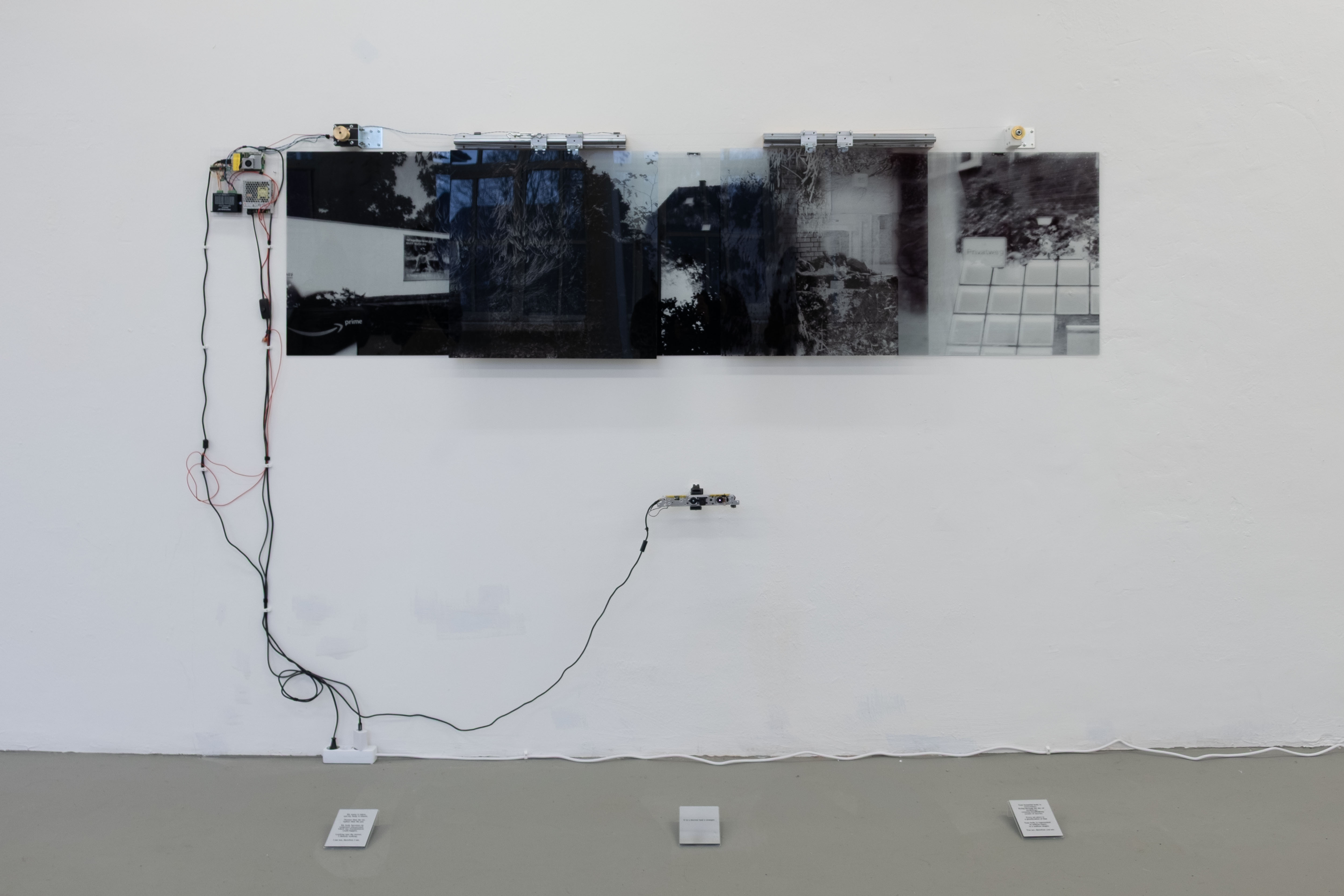
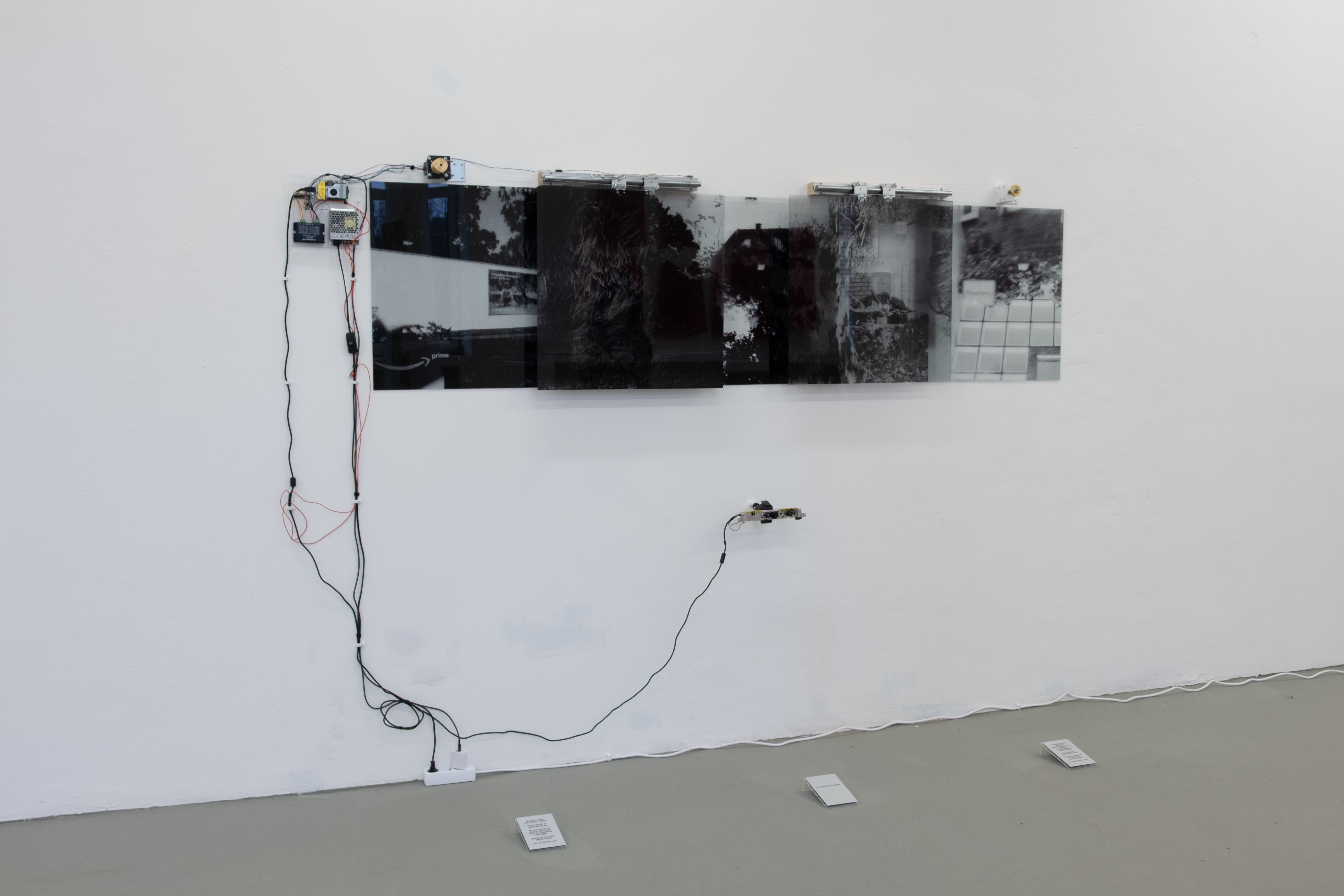
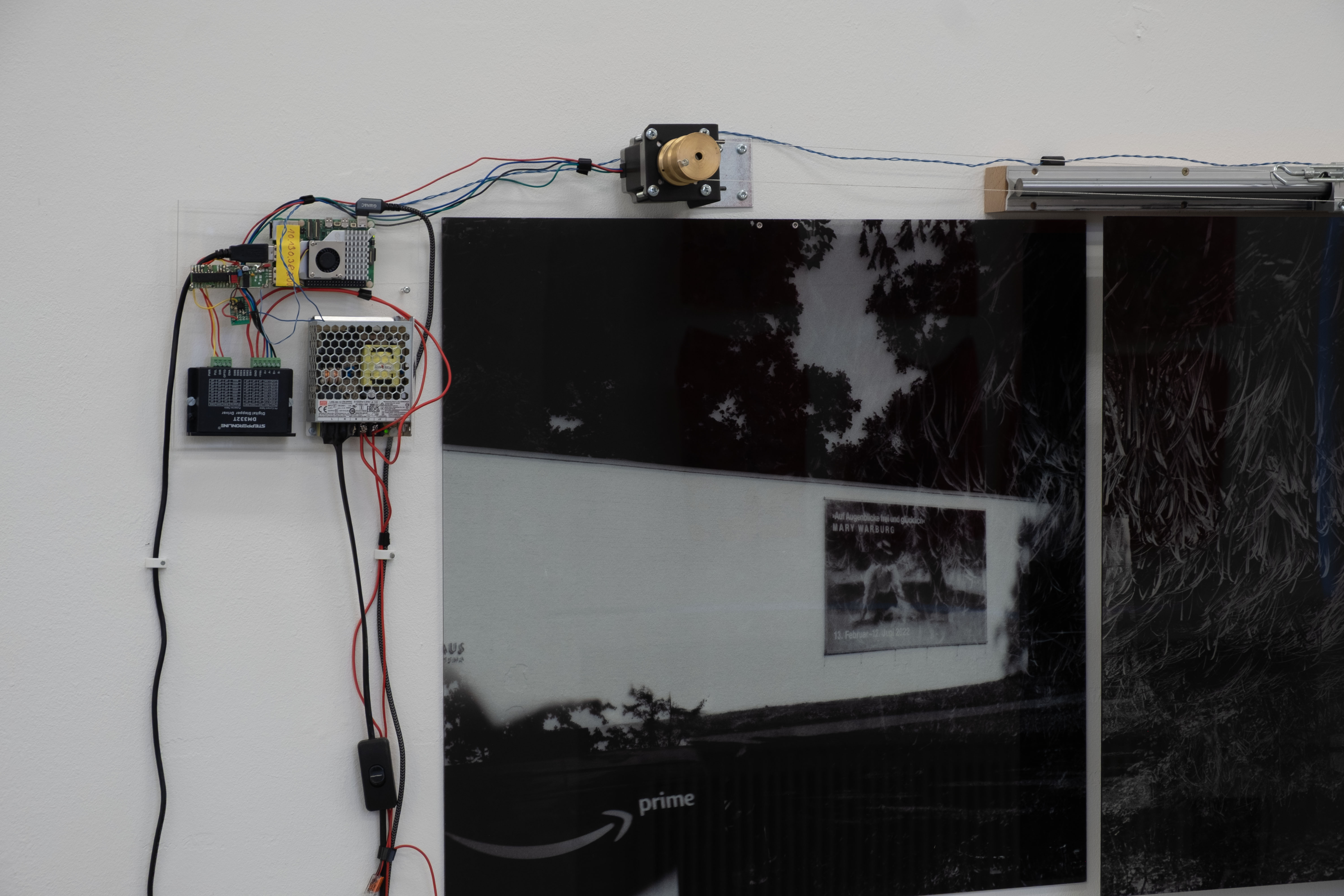
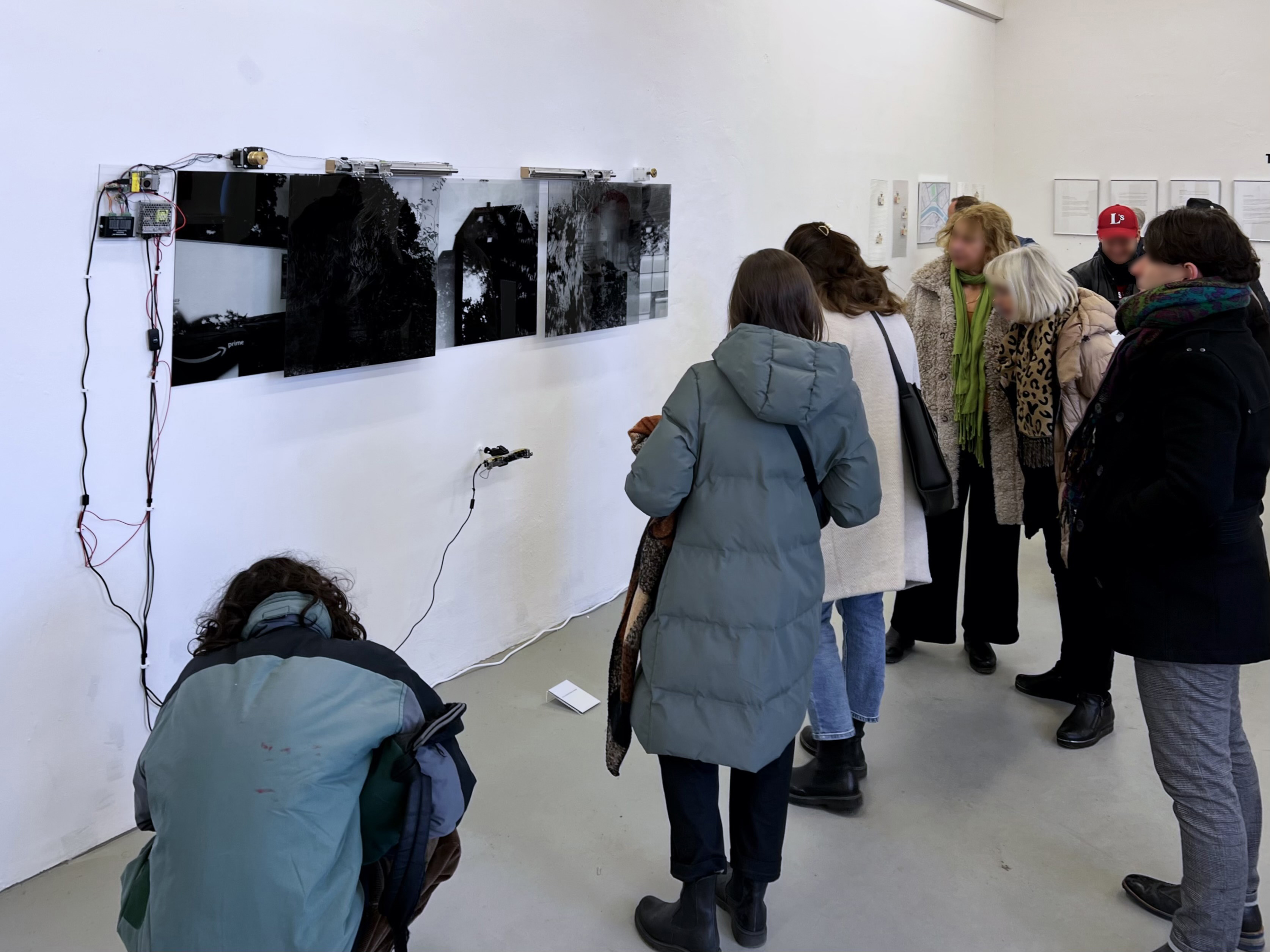
I don’t mean it bad, but Asian men look feminine
Digital-Print Photographs
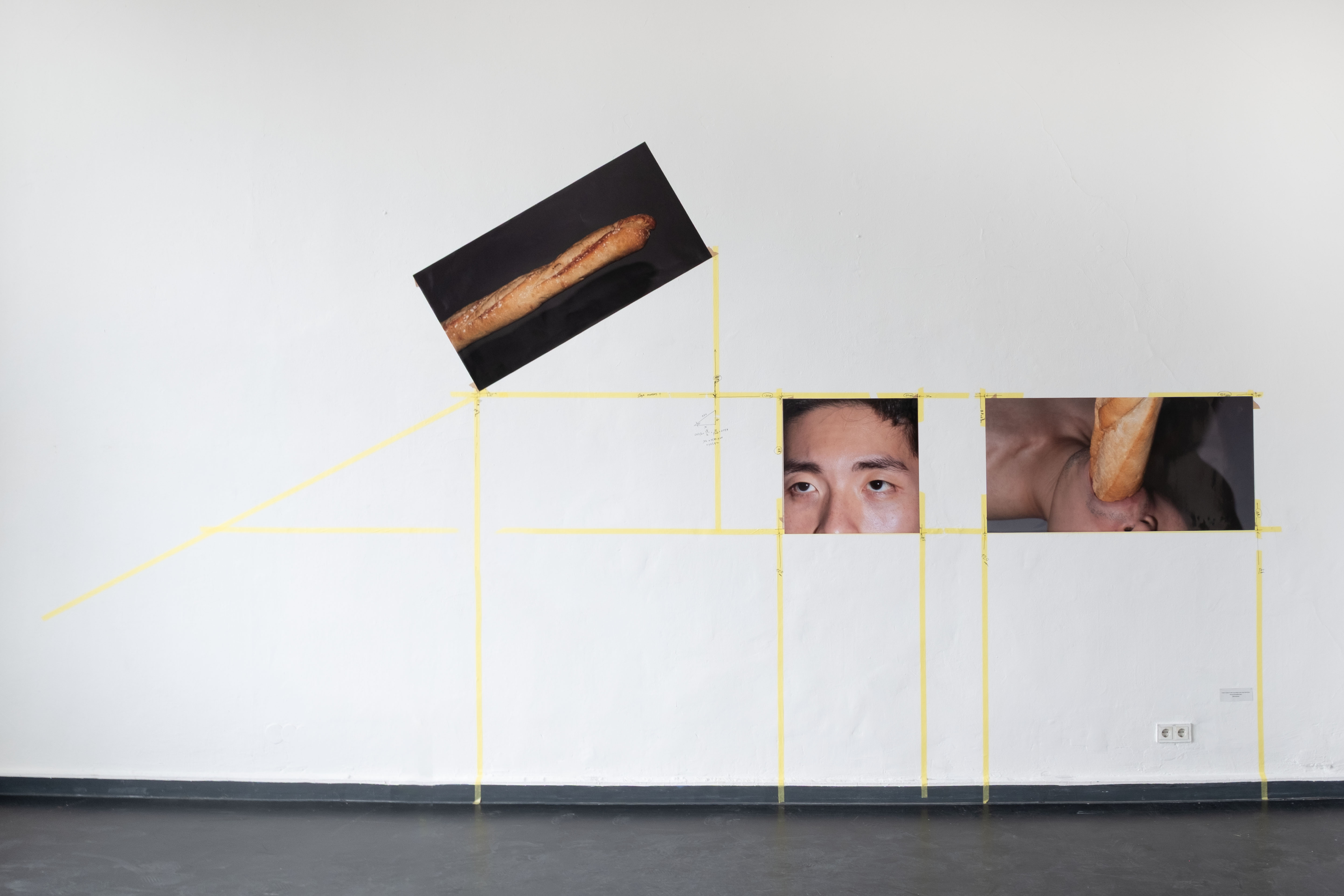
The work I don’t mean it bad, but Asian men look feminine explores the racialized and gendered perceptions of Asian masculinity in Western society. Through a series of three photographs, I examine the intersection of power, silence, and identity. A baguette—an emblem of Western cultural dominance—becomes a symbolic force of imposed masculinity, shaping how individuals are perceived and positioned.
The work questions why femininity is seen as shameful for an Asian man and challenges the societal frameworks that define and constrain identity. By inviting viewers into a constructed yet deeply personal narrative, Khing reveals the complexities of self-perception and external expectation, opening space for reflection on race, gender, and power.
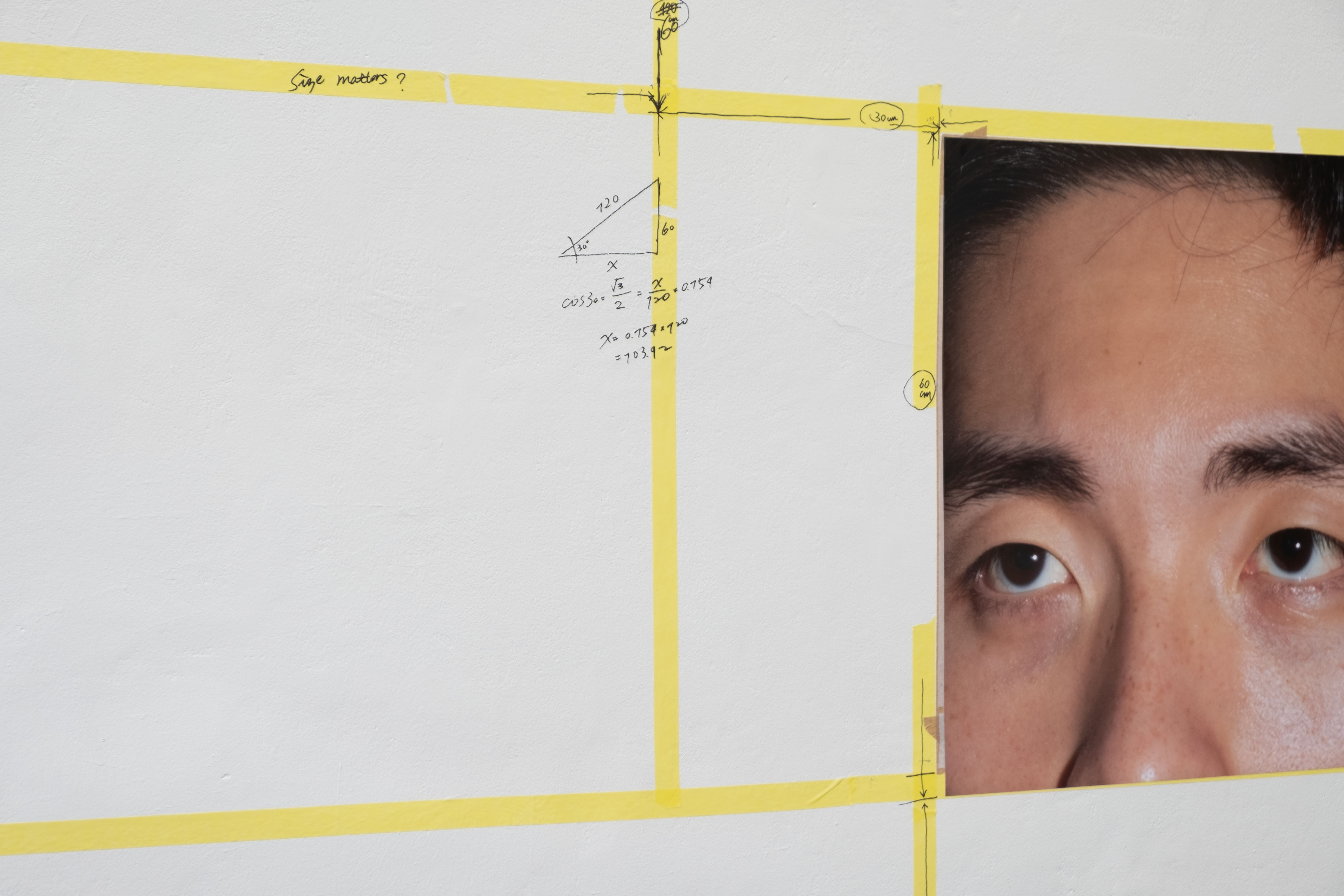
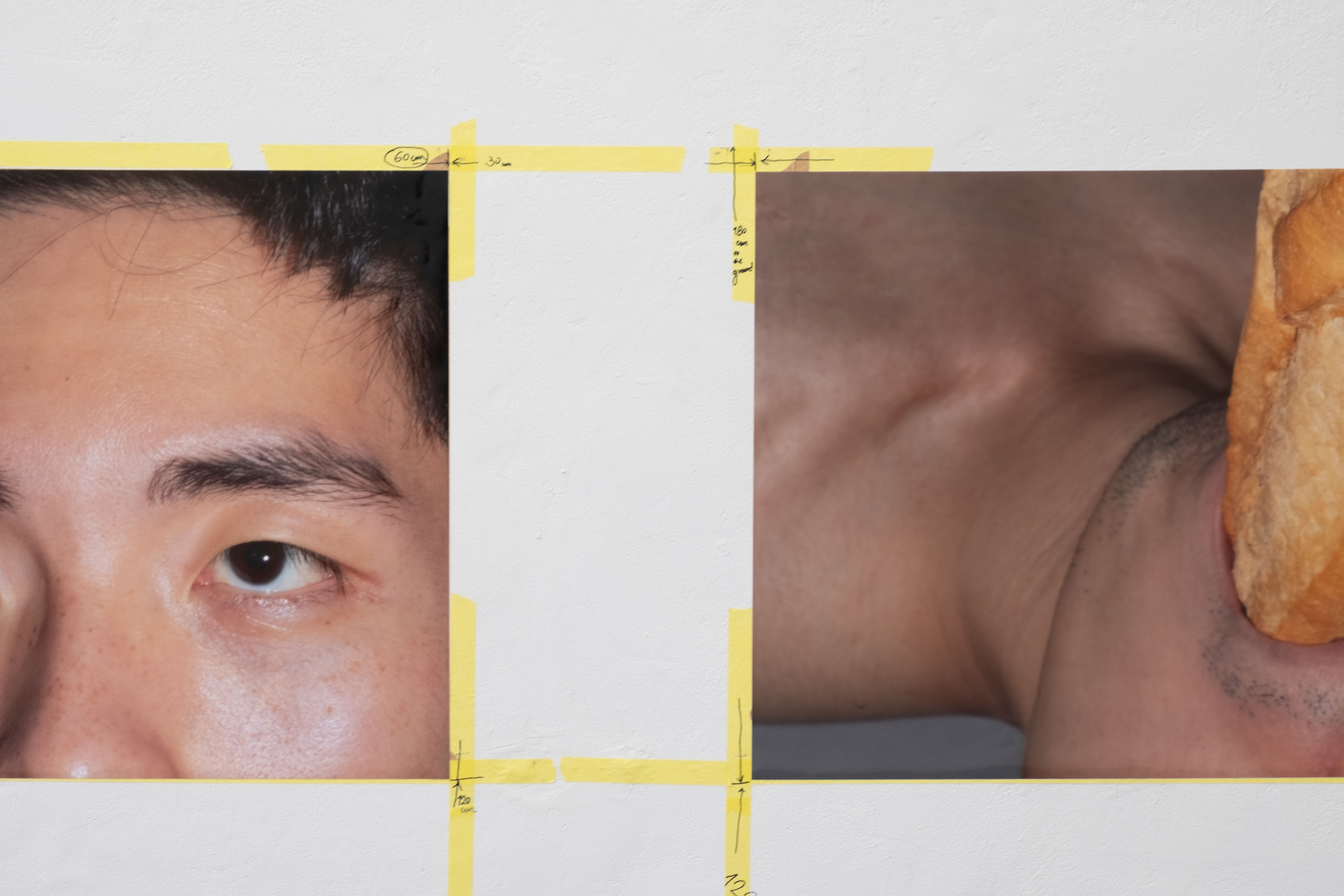
Du bist ein Traummann (Wall)
Photo prints, UV-printed acrylic mirror plates
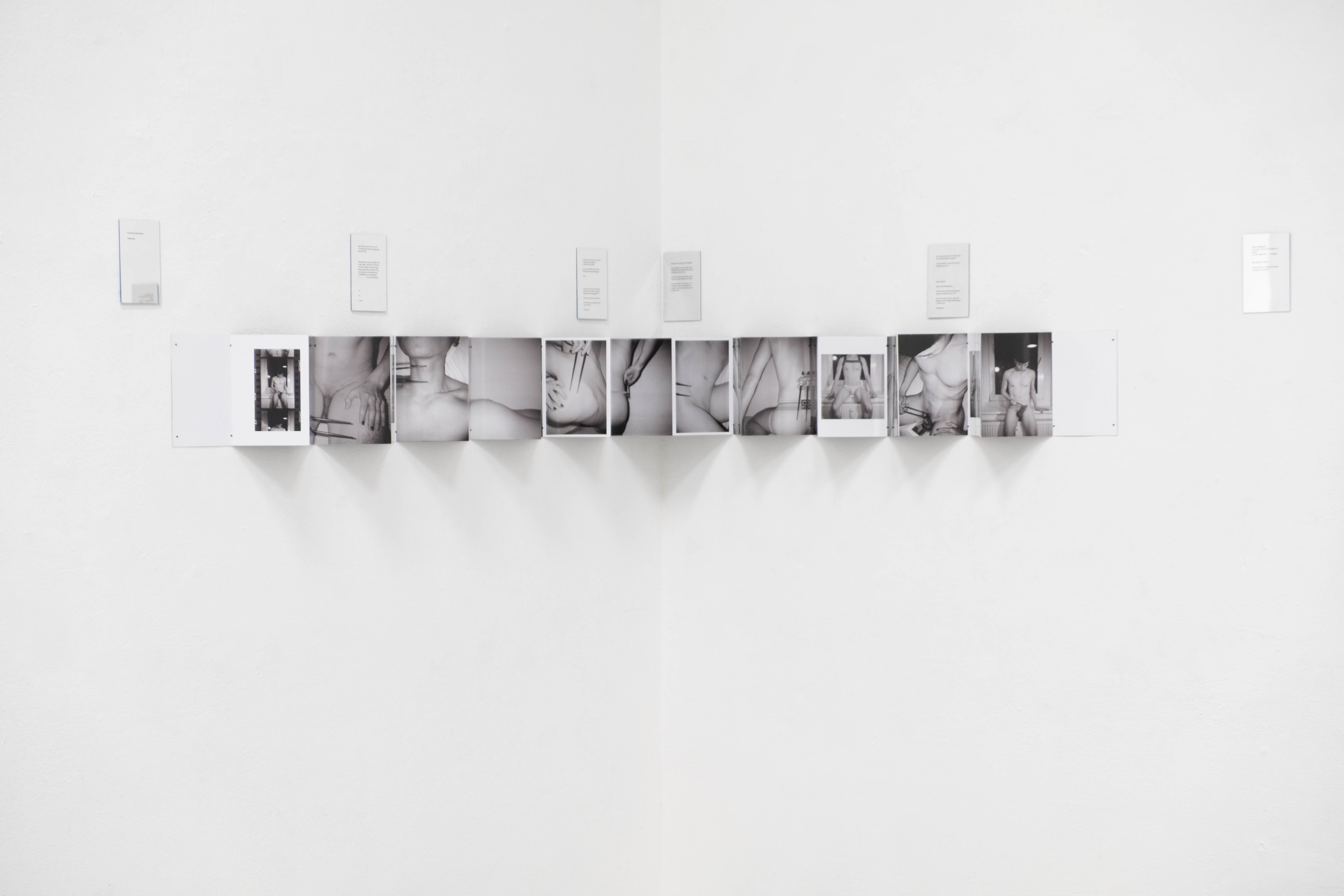
A development from the photo book of mine. Giving audience a different way to read and more opportunities to cut into the narrative
Du bist ein Traummann is born from my experiences as an Asian homosexual man, grappling with the complexities of categorization, fetishization, and racism. The first layer of this creation encapsulates my own struggles, serving as a visual and emotional representation of the challenges faced by those like me in a society that often reduces us to stereotypes based on our race and sexual orientation.
The second layer, the heart of Du bist ein Traummann encourages the audience, to actively engage with the piece. I want the audience to confront their own preconceptions and biases as the audience immerse their selves in the imagery and the reflection in the mirrors. Through this engagement, I aim to trigger a self-reflection, leading the audience to gain a deeper understanding of both their selves and the broader societal dynamics at play.
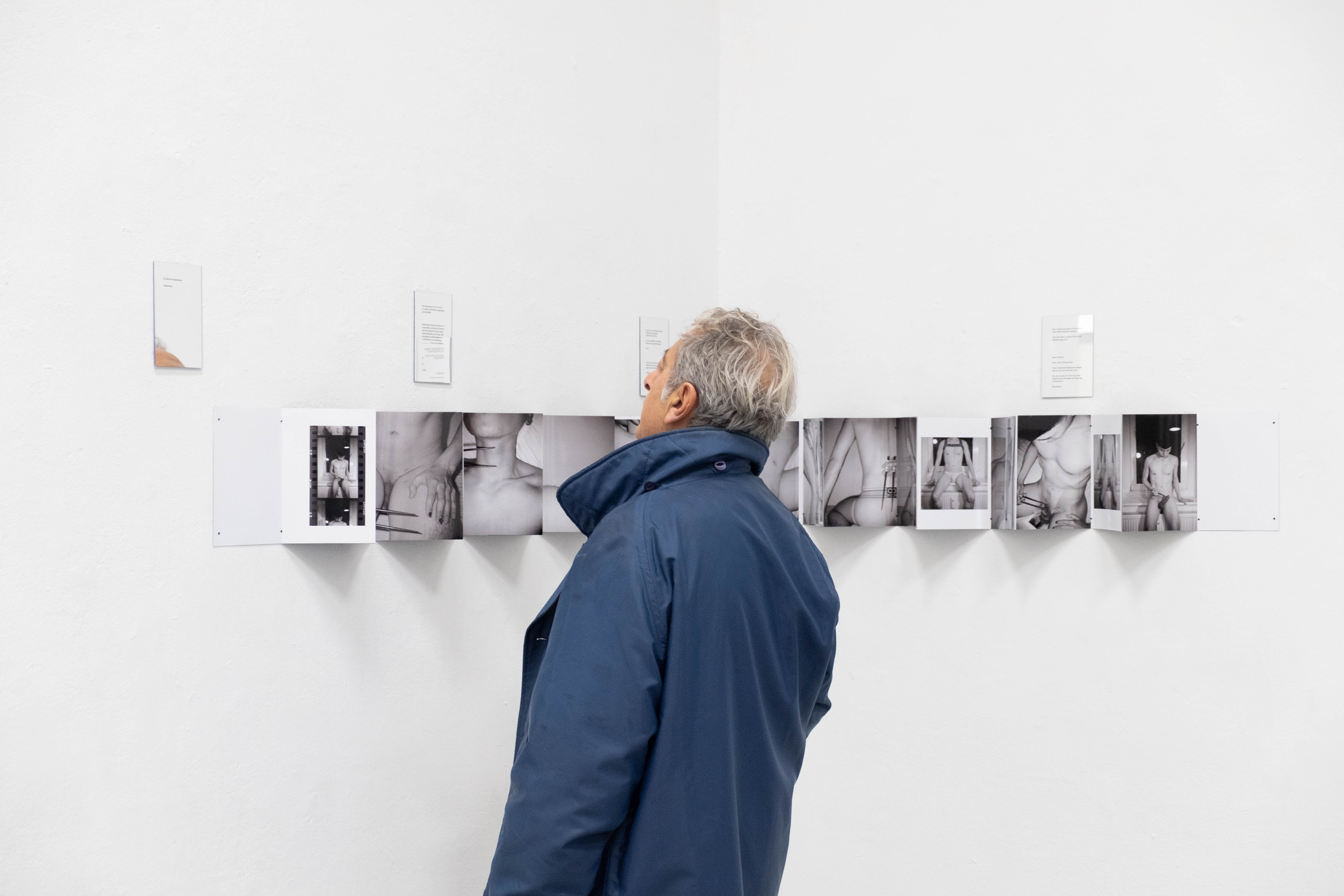
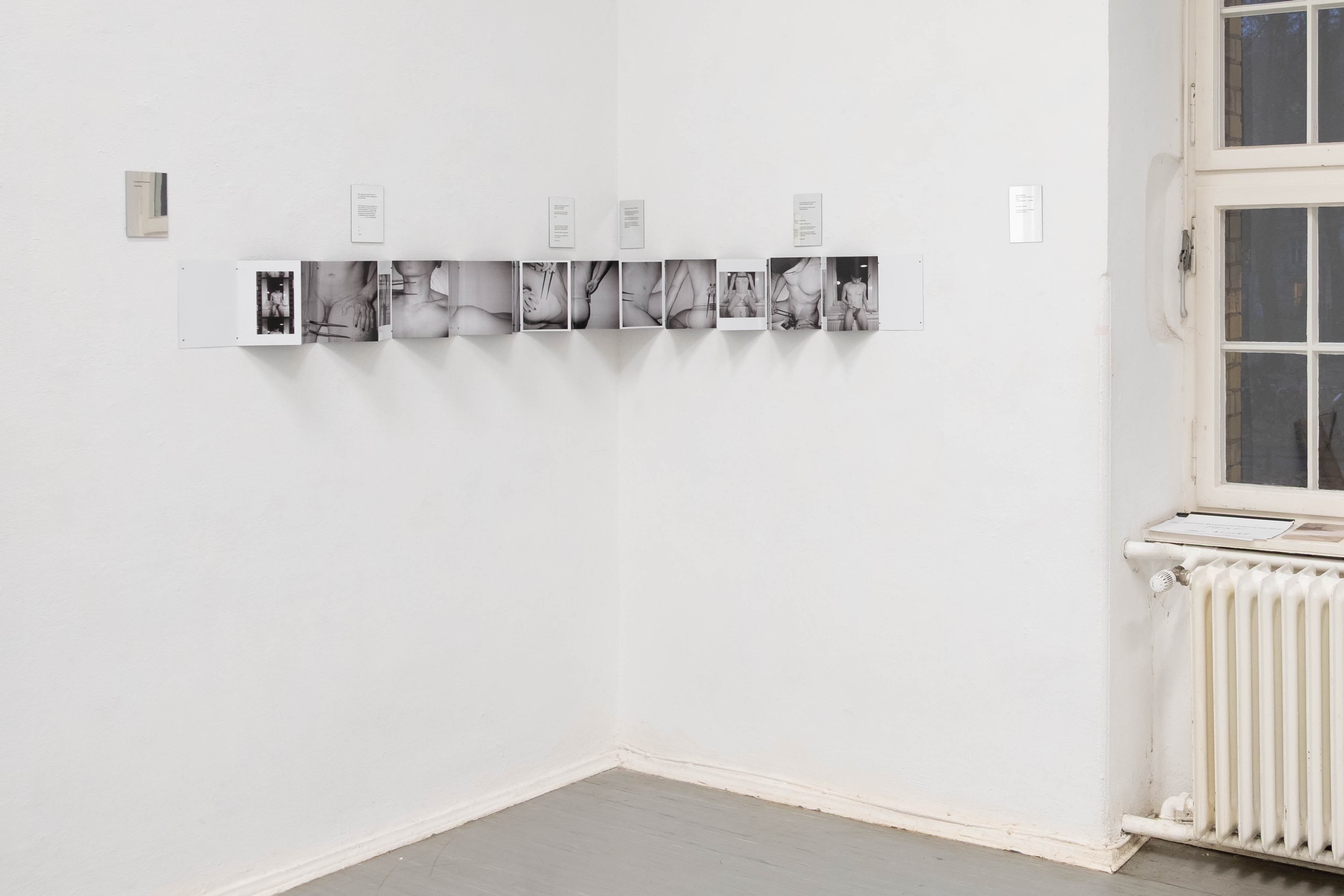
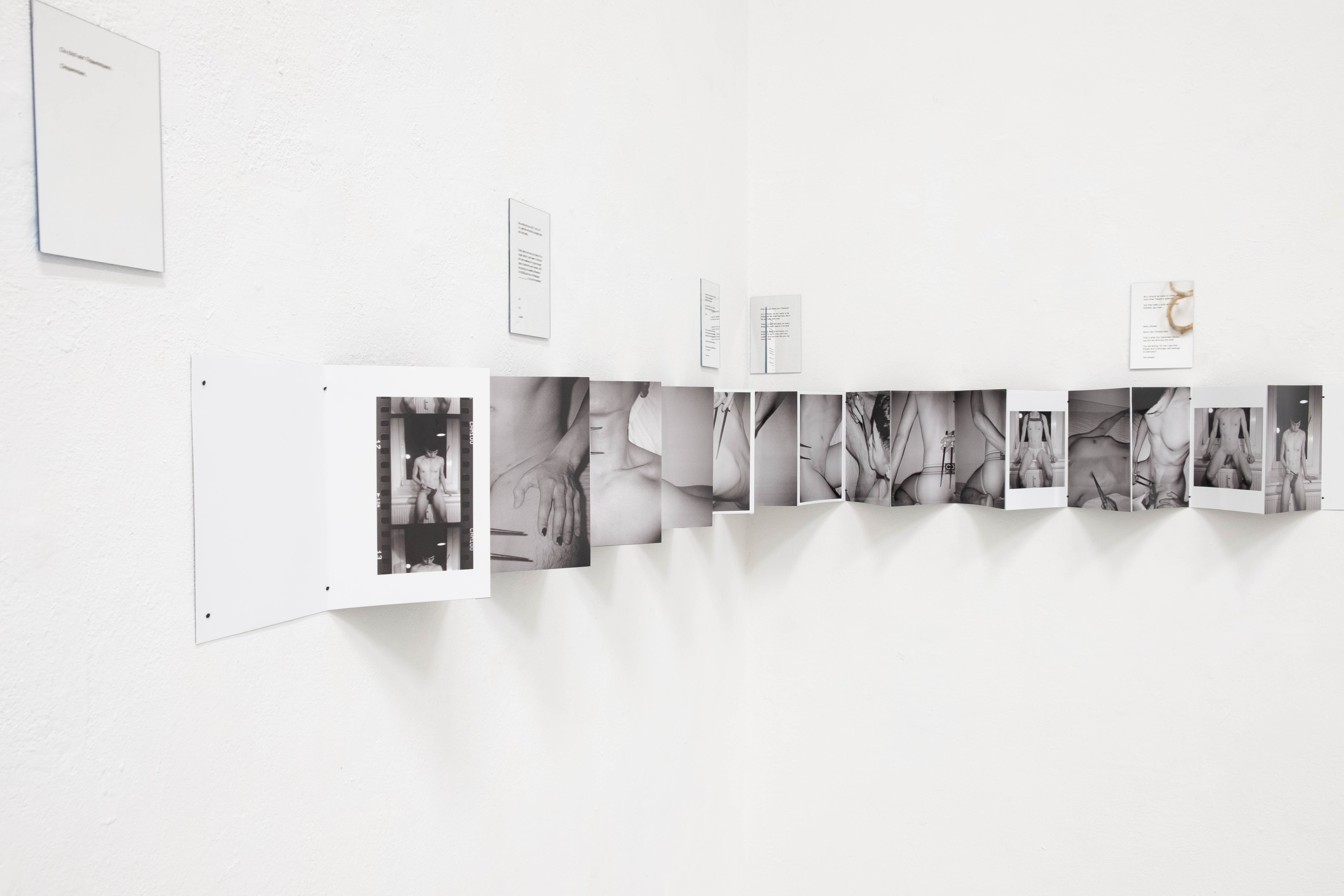
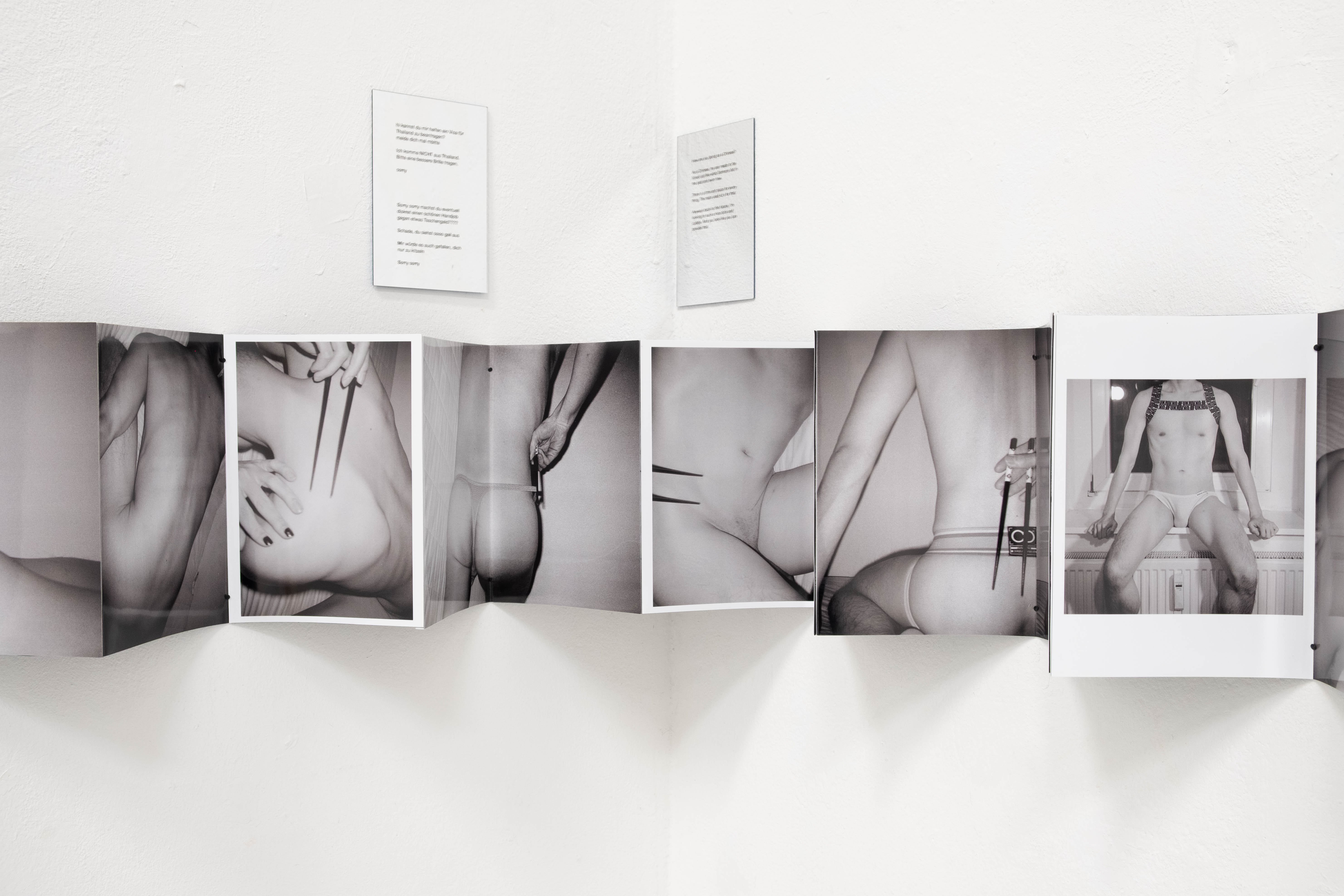
Dripping Island
White Fabric 500*500 (cm), Mechanic Device, Sensor Camera
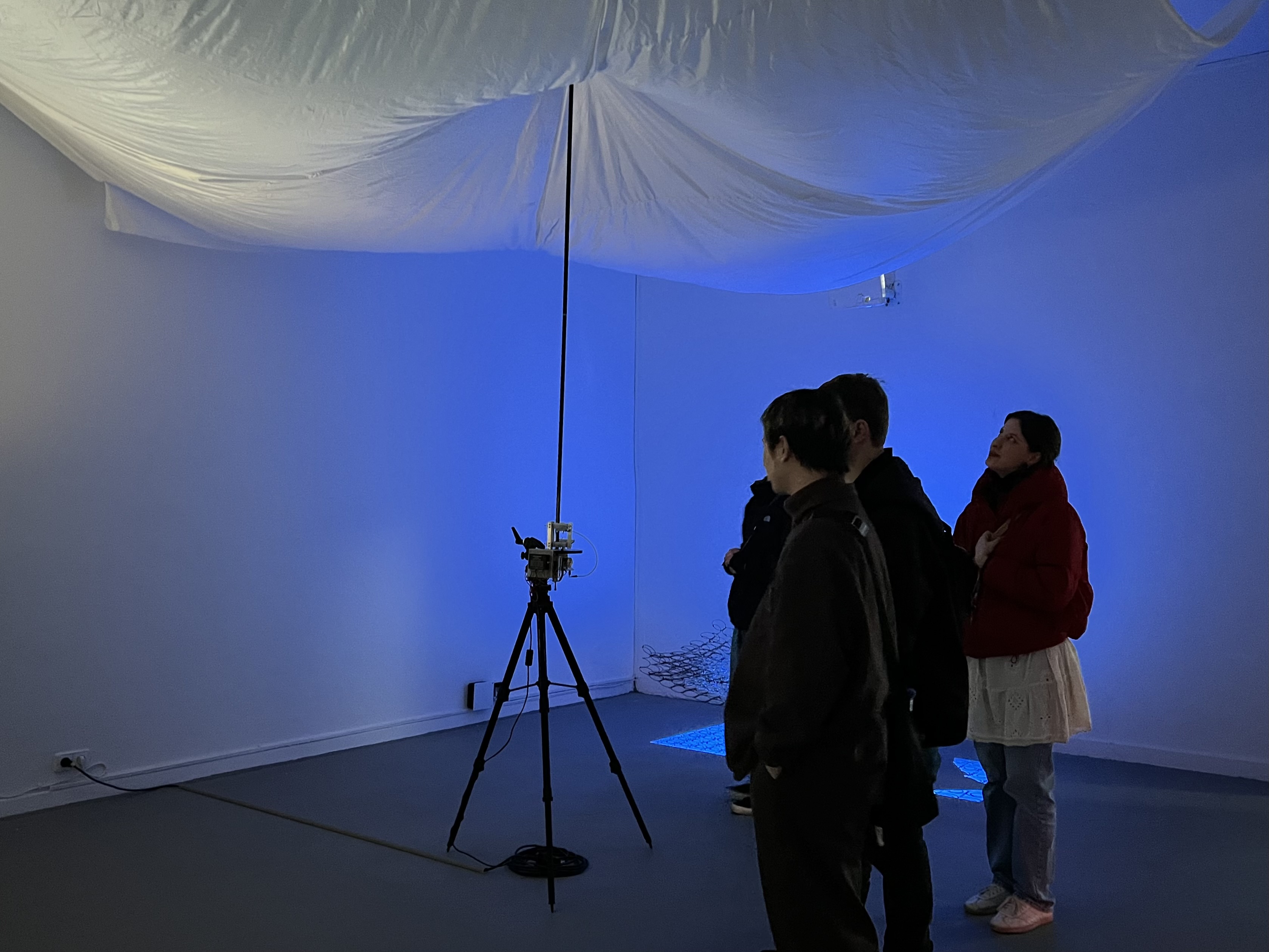
A camera inductor captures movements around the centrepiece, and will be triggered by the surrounding movement. The machine has a motor to drive a stick moving up and down, to rise the fabric above, which hangs from the ceiling. Once the audience walks into the range of the camera, the stick moving up and down creating waves on the fabric, which simulate the situation where one person reacts when something or some others hits. Or a small island country is always triggered in response to the force coming toward it, and ripples, waves are created. I want to translate the living situation in Taiwan into this metaphor. But what kind of interpretation can be to the audience, can be decided by themselves.
This is an island, located between powers. The faith of this island had never been owned by itself.
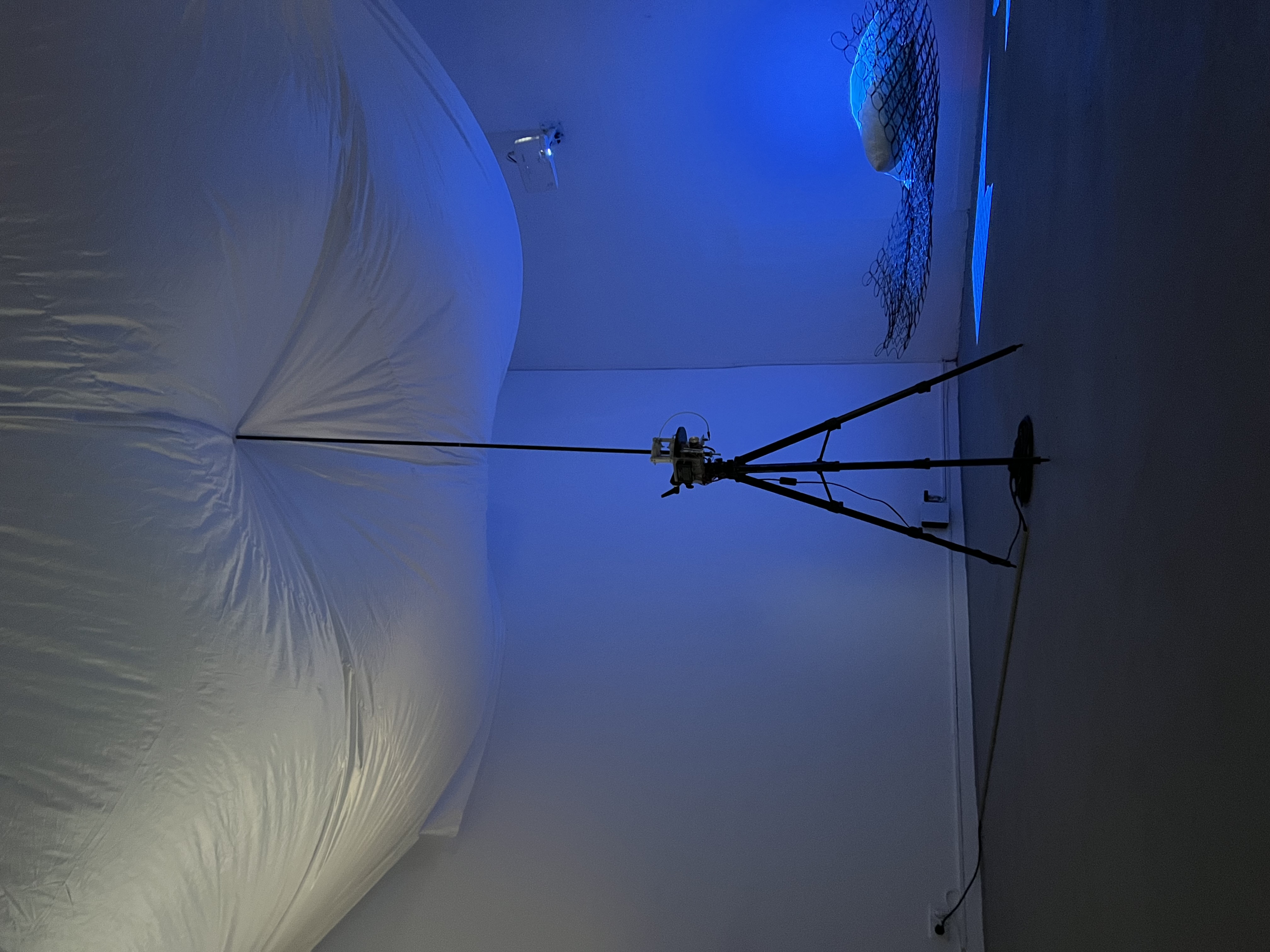
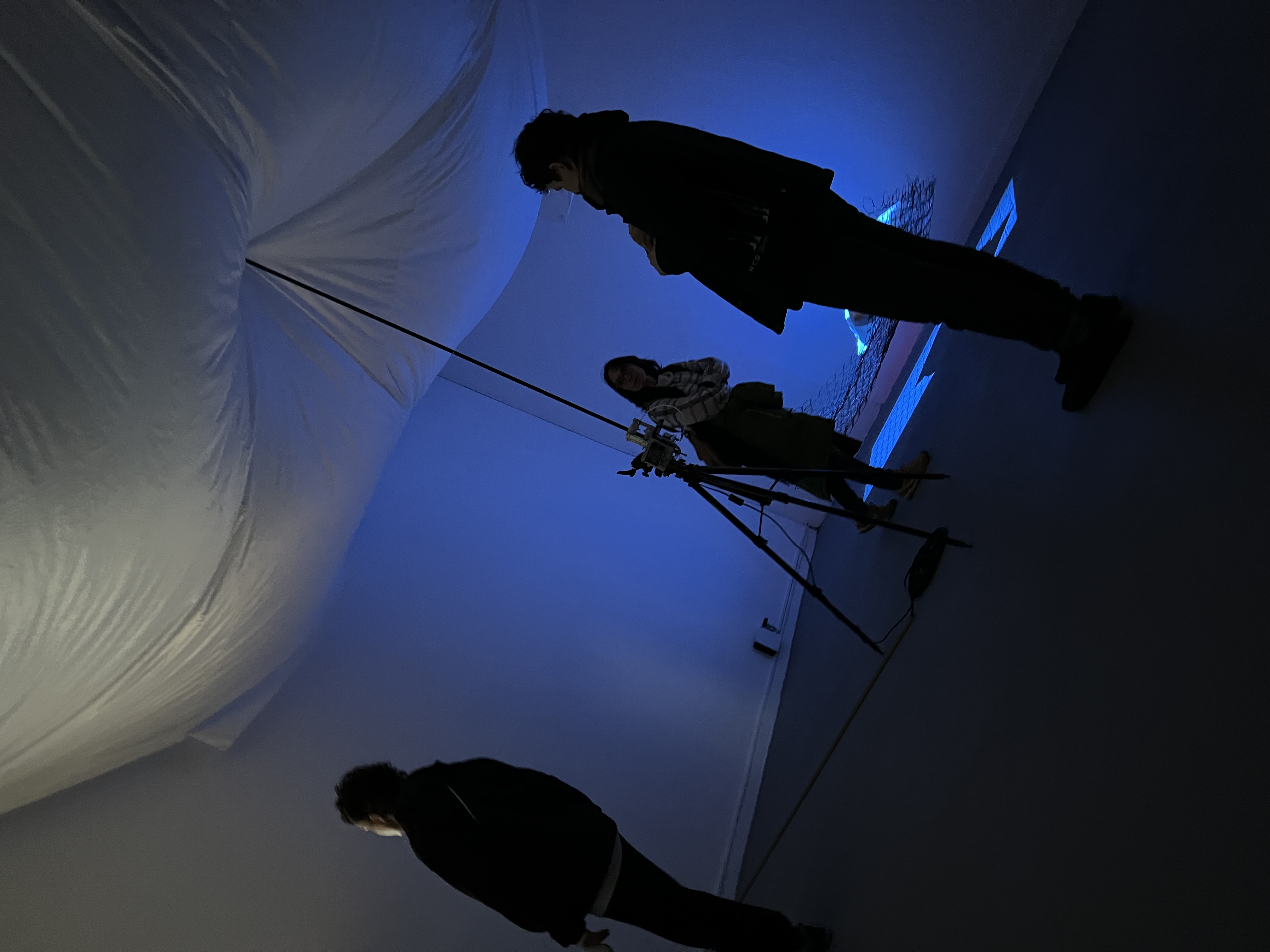
Displaced Cicada
Photo Prints, Short Film 25 mins with Audio
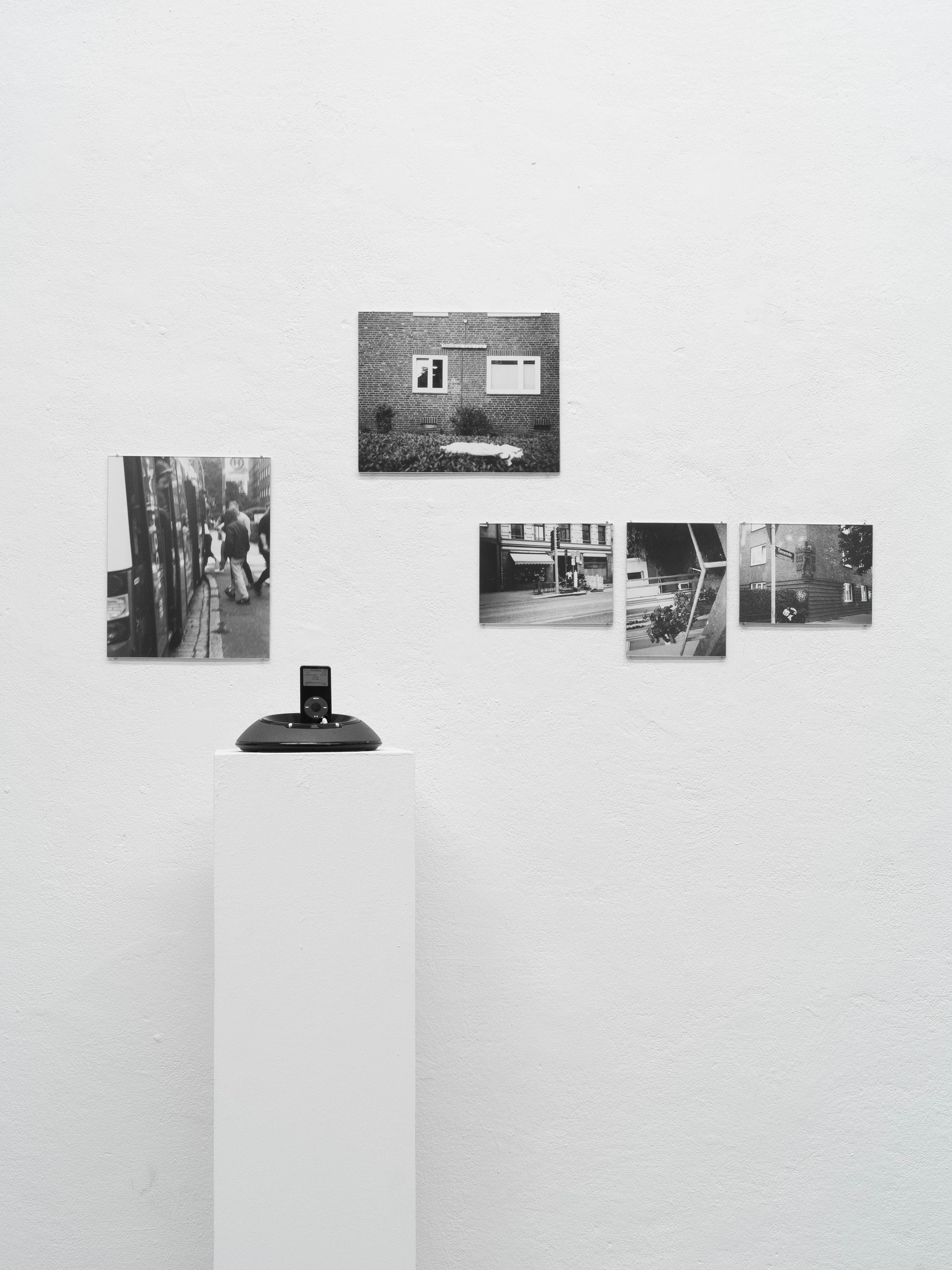
What will happen when a subject is placed where it doesn’t belong to? The interplay between subject and habitat results in the emergence of a novel, hybrid identity, built through the charges of its new environment. Everything is rotating and dazzled, which makes all the sensations shattered. The subjectivity is questioned even more, from the inside and outside, when the subject makes the decision to be displaced. Within this whirlwind, the subject's essence undergoes a metamorphosis, prompting a poignant inquiry into subjectivity.
Displaced. Disoriented. Foreign.
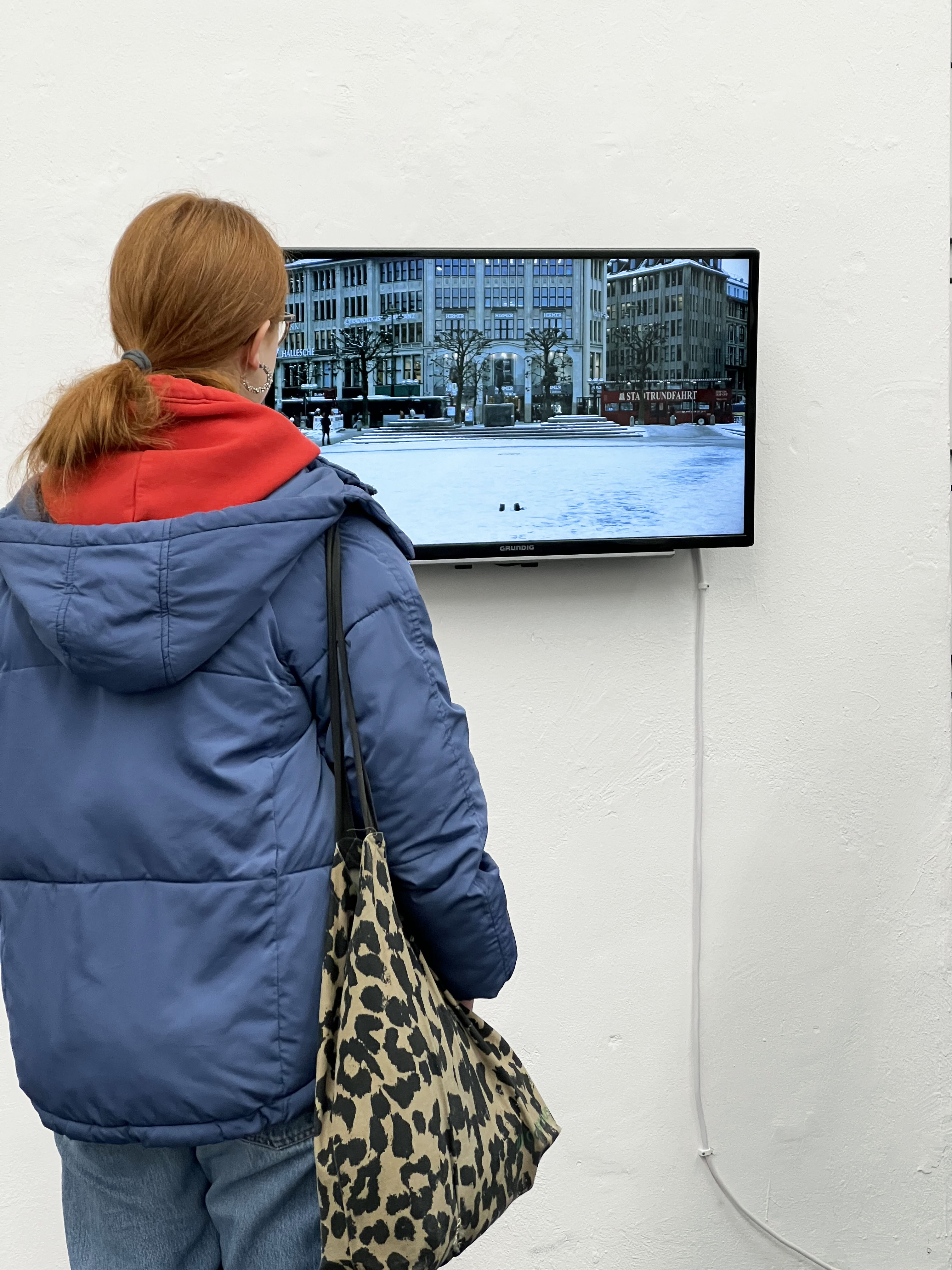
The Phases of My Moon
Photo Prints 40*50 (cm), Microphone Stands
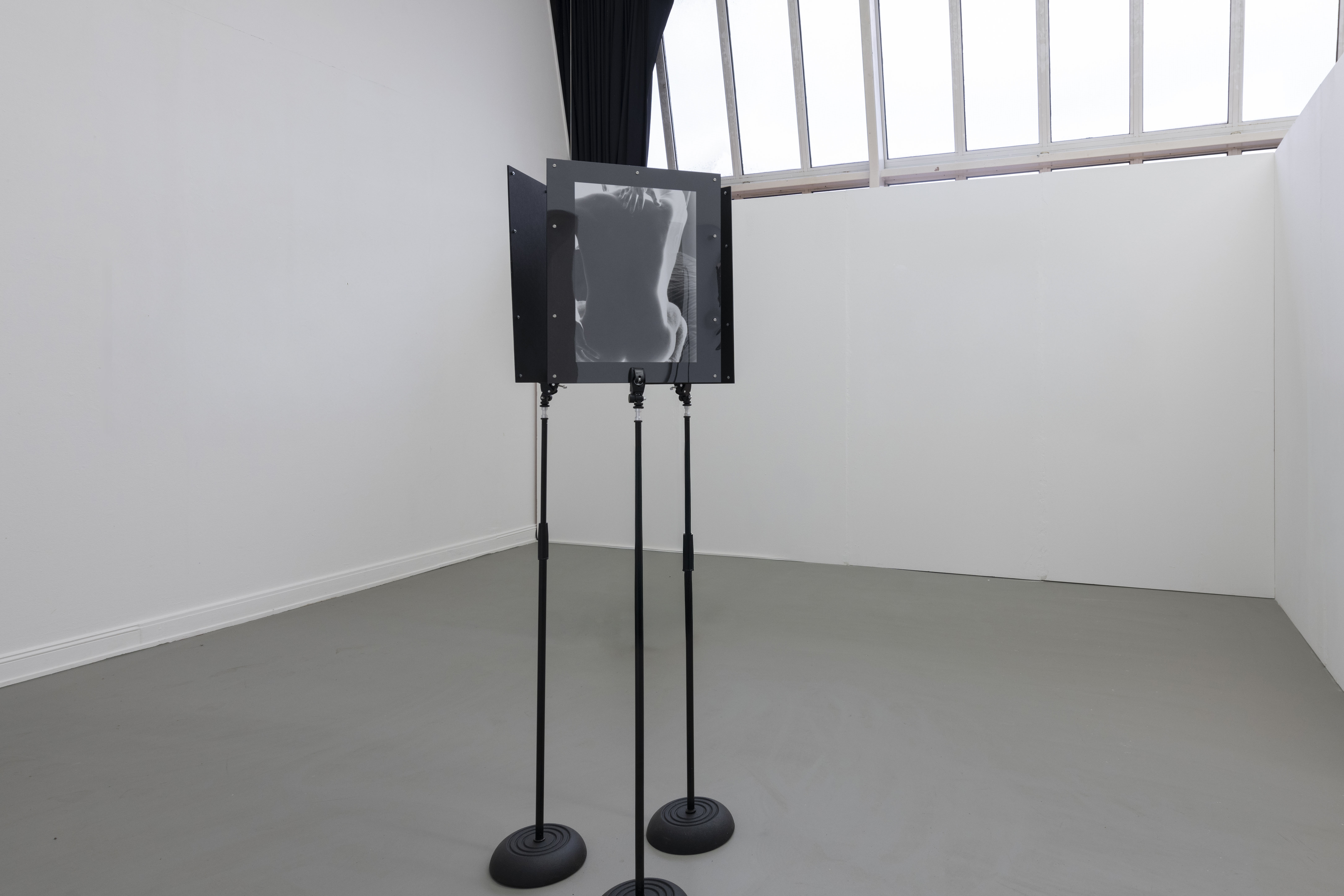
Some nights, I can feel myself within the body, owning the body; some other nights, I feel myself as something else I recognize but unfamiliar detaches from the body. In Germany, I have more selves given to me, but they told me, I was born with them naturally. I find and lose pieces of me every night, wondering which is my true part. Perhaps they all are.
I’m being, at the same time, I’m becoming.
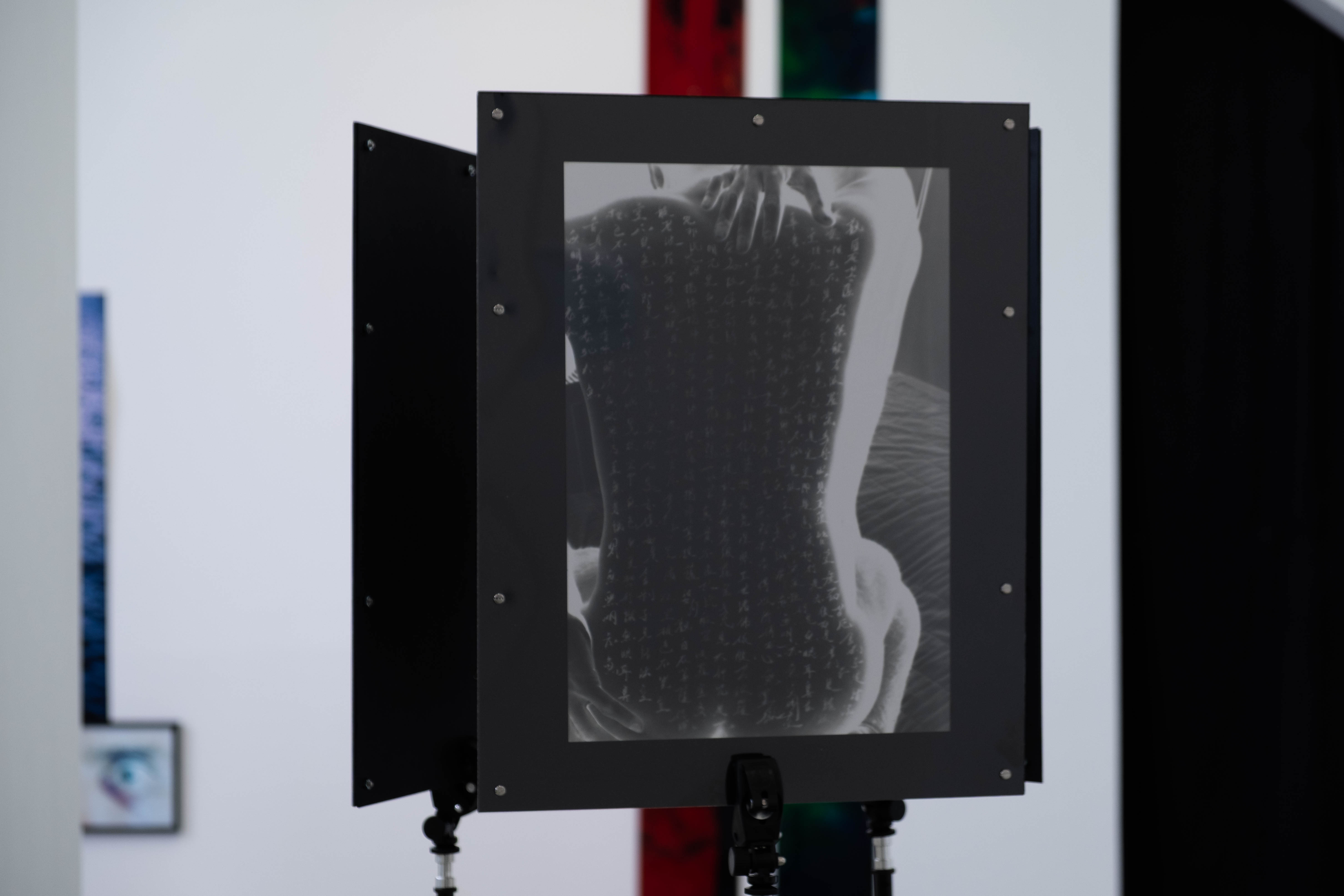

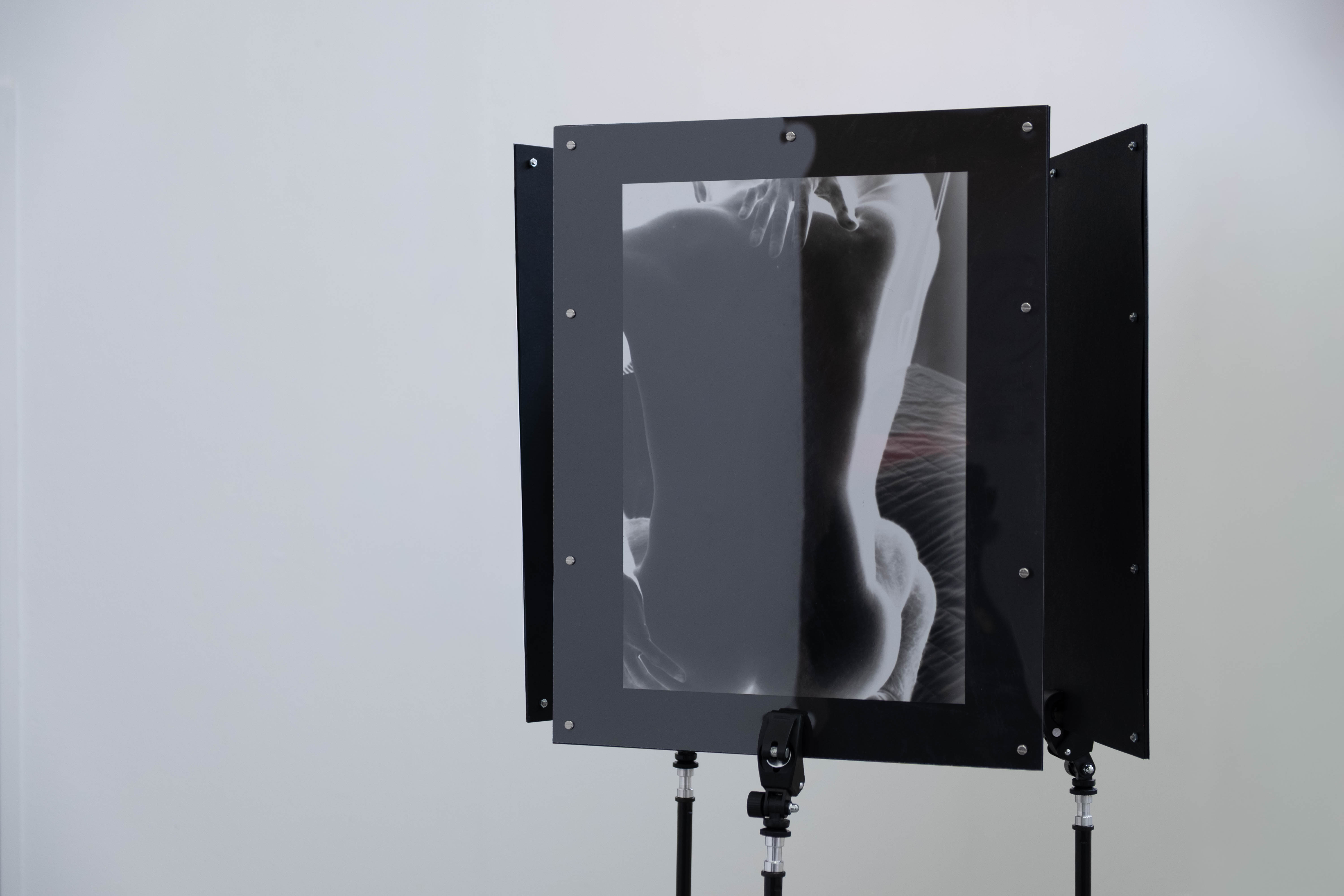
The Other Side of The Moon
Camera Device, Monitor

The backside of the body is a mystery to each own, unlike the front side which, we can see and touch. This means we are fully aware of the existence of the front side of the body, but the backside of the body is hardly seen or touched, which remains mysterious. If our reality is constructed by visual and tactile sensations, the backside appears like the other side of reality. In this work, audiences experience the video of me trying to grab my back, as I try to touch that other side of my reality. At the same time, they will find themselves being a part of my installation. The other monitor connects to a camera which captures the backside of the audience, however, it’s impossible for them to check the image of their backside, which simulates the experience of what I am trying to do in the video, and can only be observed by others.
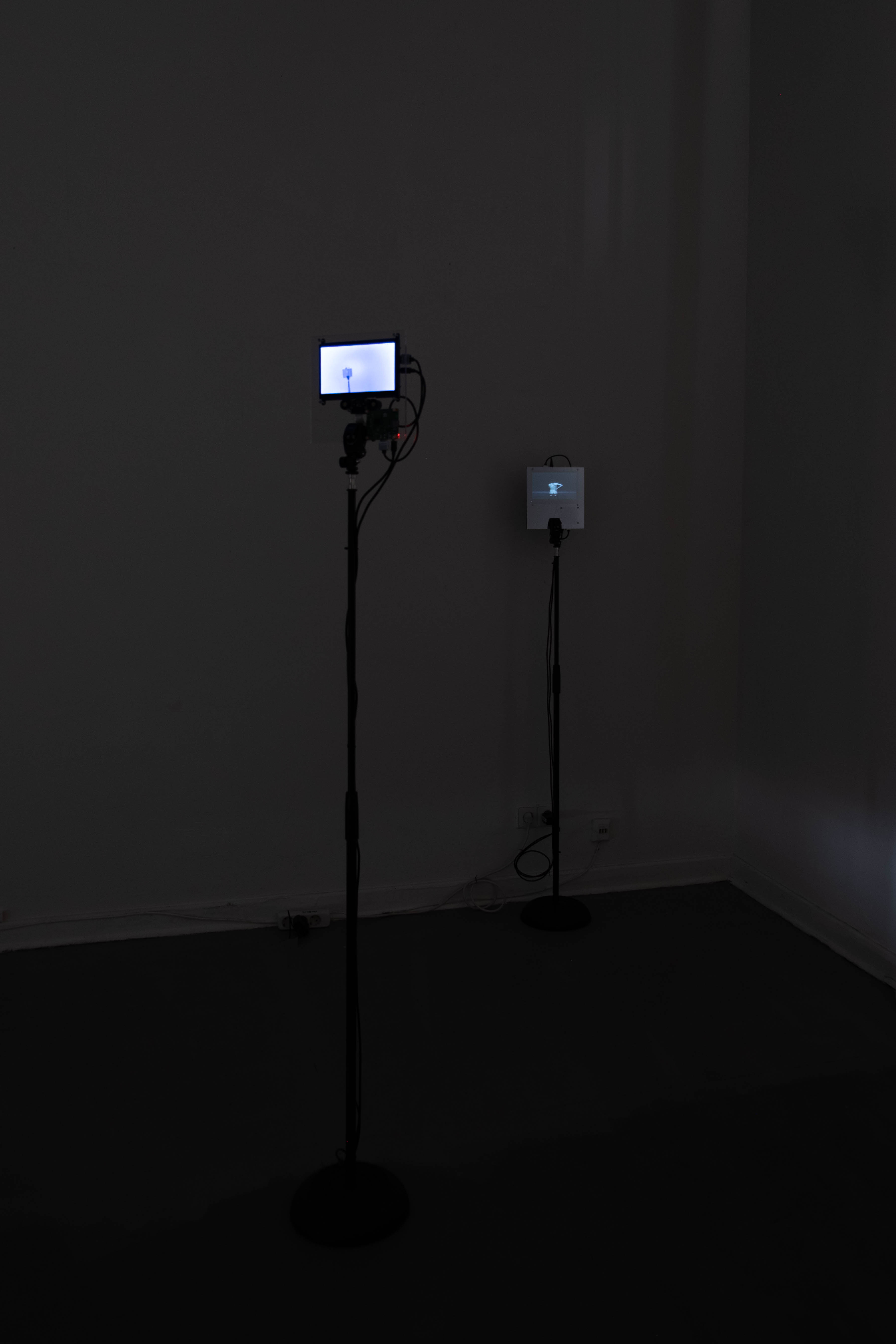



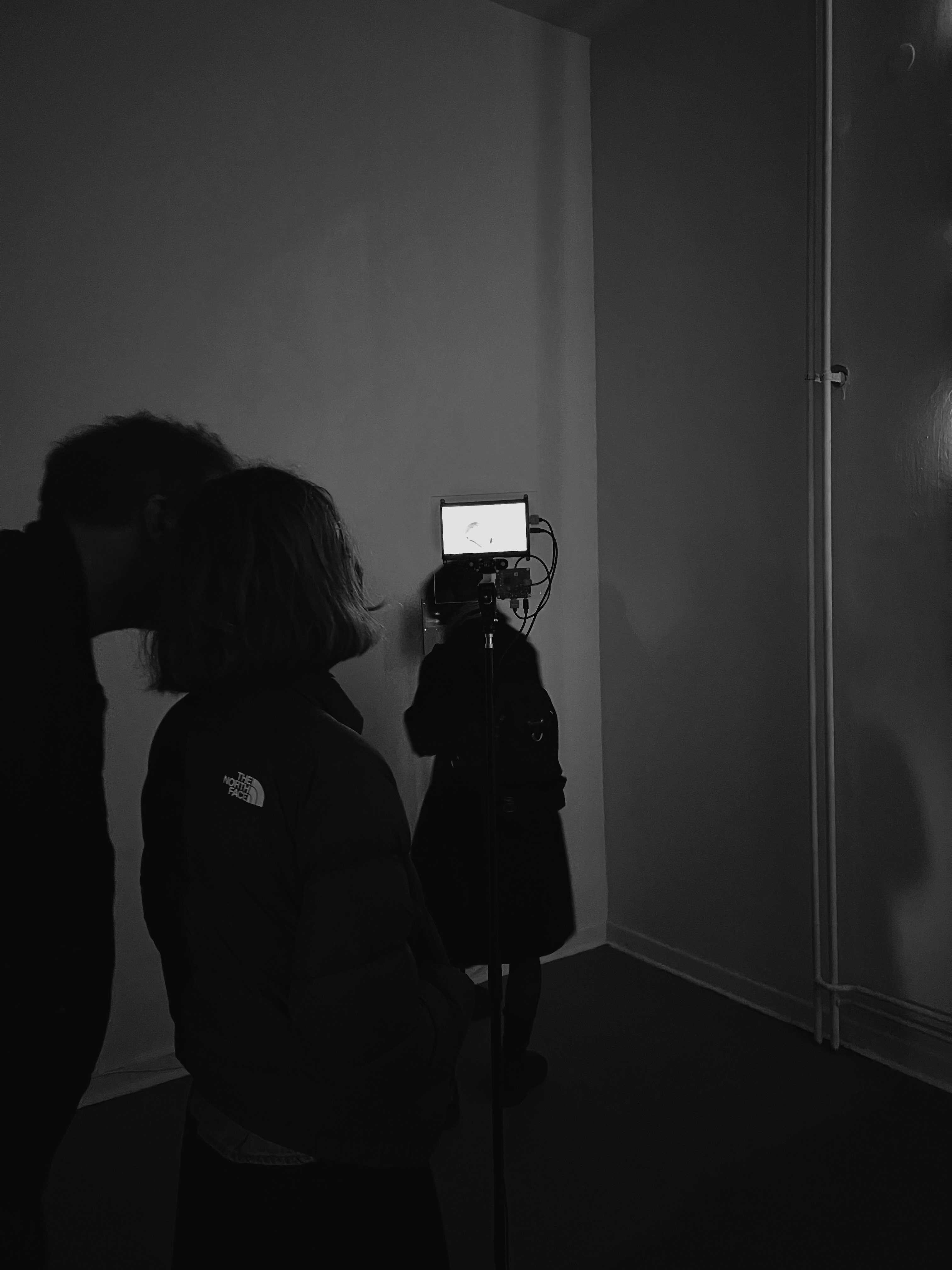
Du bist ein Traummann (Book)
Camera Device, Monitor
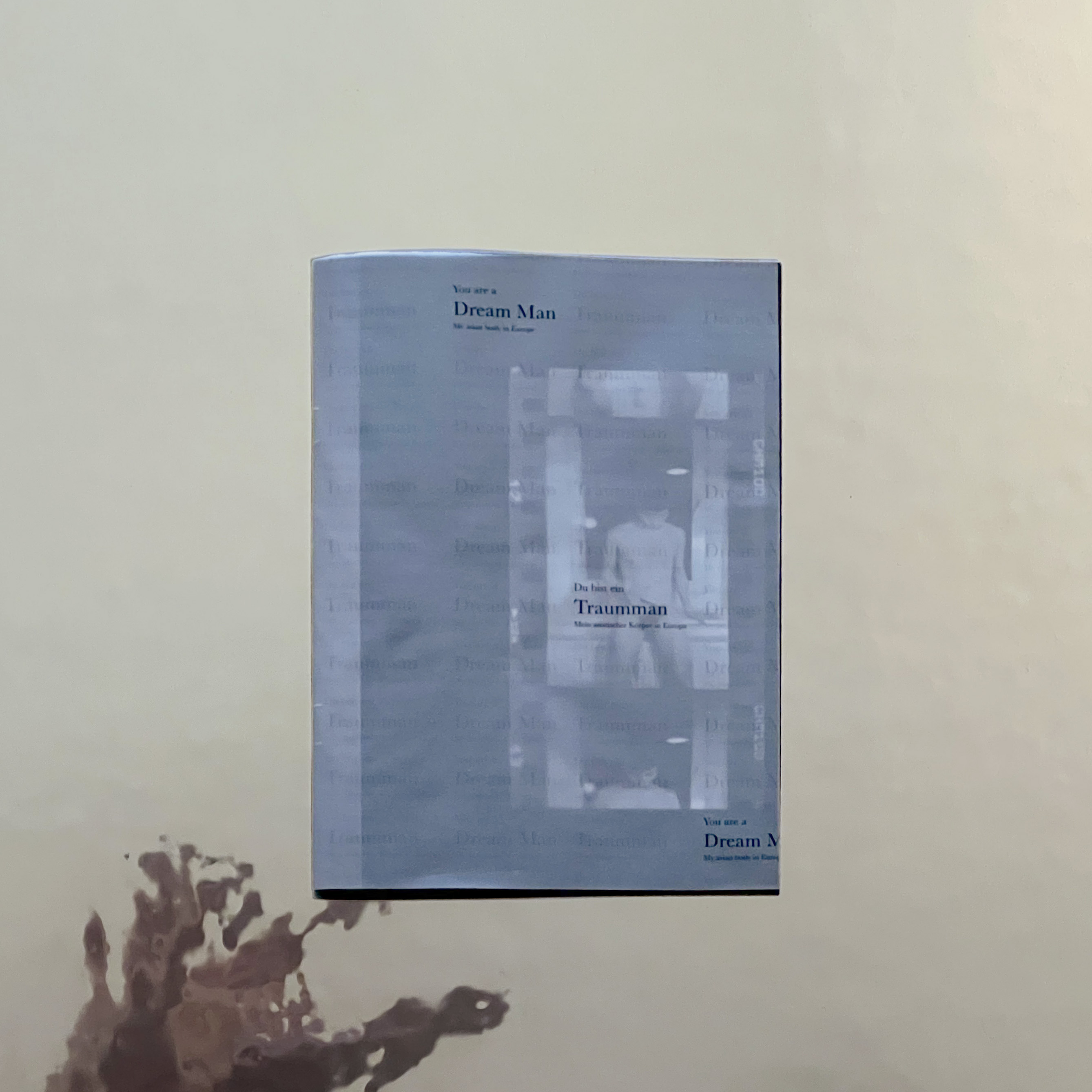
The works are base on my own experiences and also inspired by my friend’s literary essay. The subtitle “My Asian body in Europe” is from one of the section in his book “Queue du temps”, which perfectly matches what I want to discuss. I appreciate Yu-Hsuan Lin a lot for his inspiring work.
Europeans are very used to the representation of their own type of body in museums, in commercials, in literature, etc. And the representations are not just in Europe, they exist everywhere around the whole world.
One of the major thing I want to discuss in this book is the situation that how I have been fetishized. As a person who has an appearance which is clearly different with just one gaze.
There are some stereotypes about Asians, specially east-Asians, in gay community in western world. And even outside the gay community, the western society has certain point of view full of cliché looking at my body.
